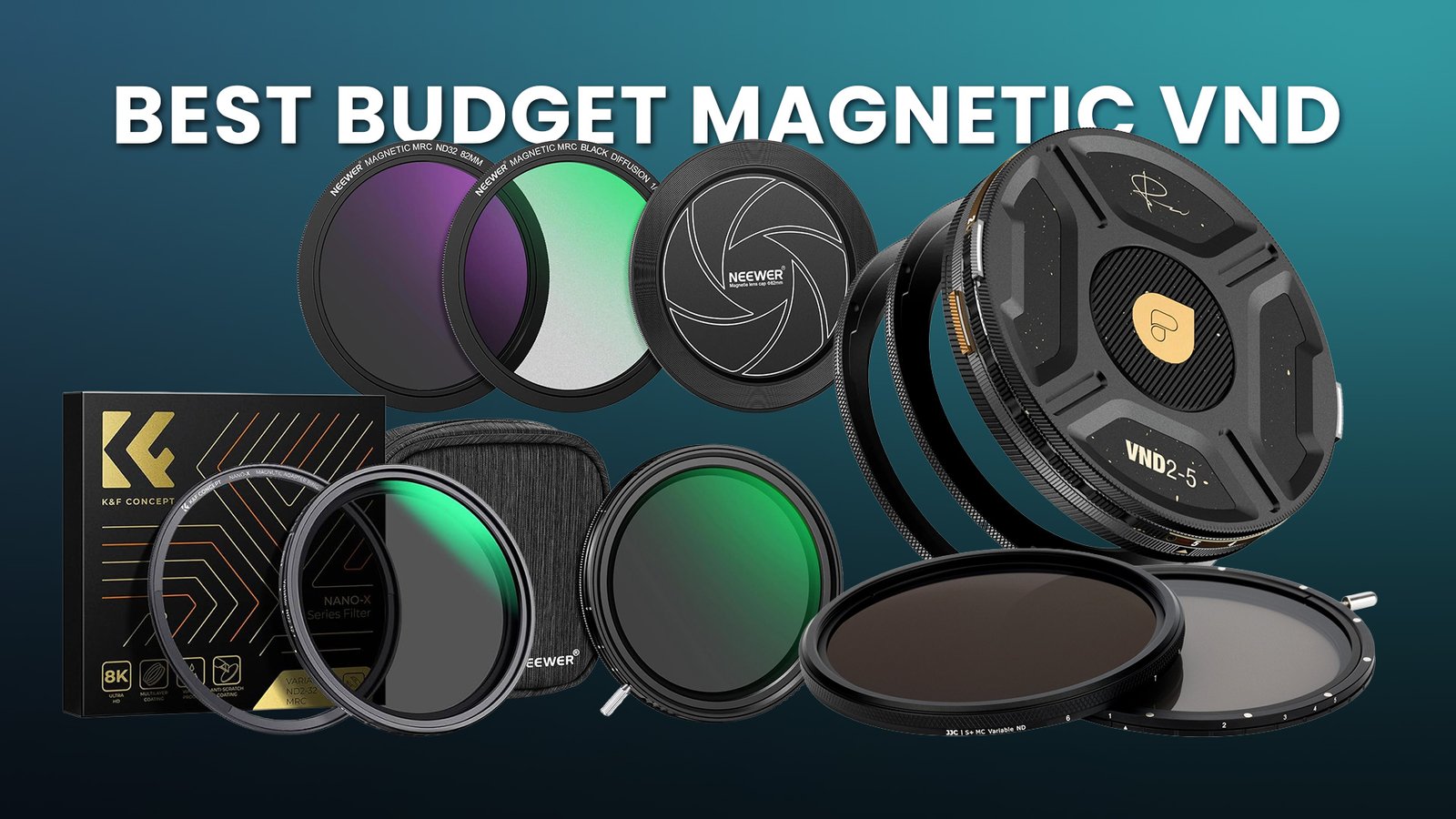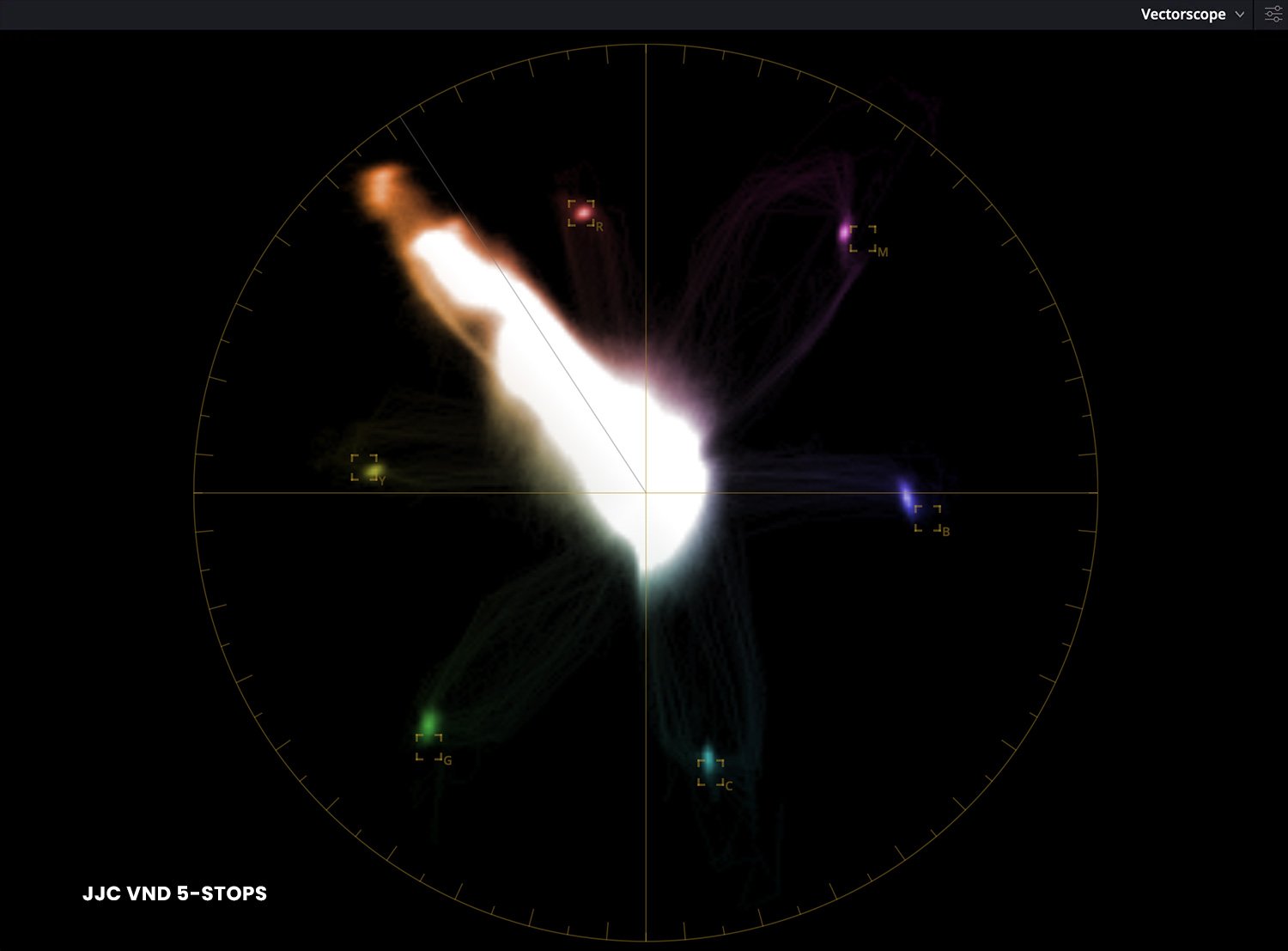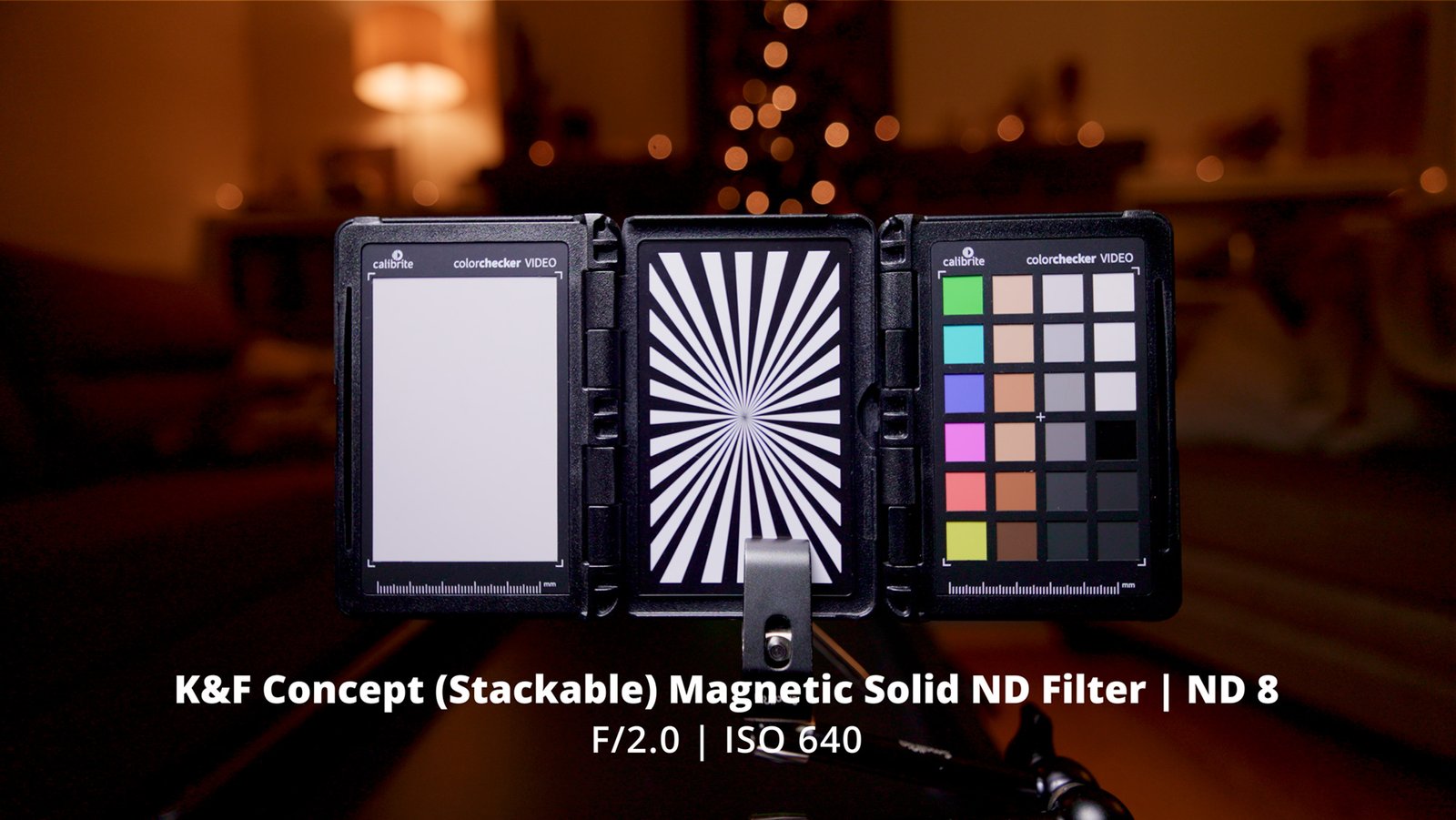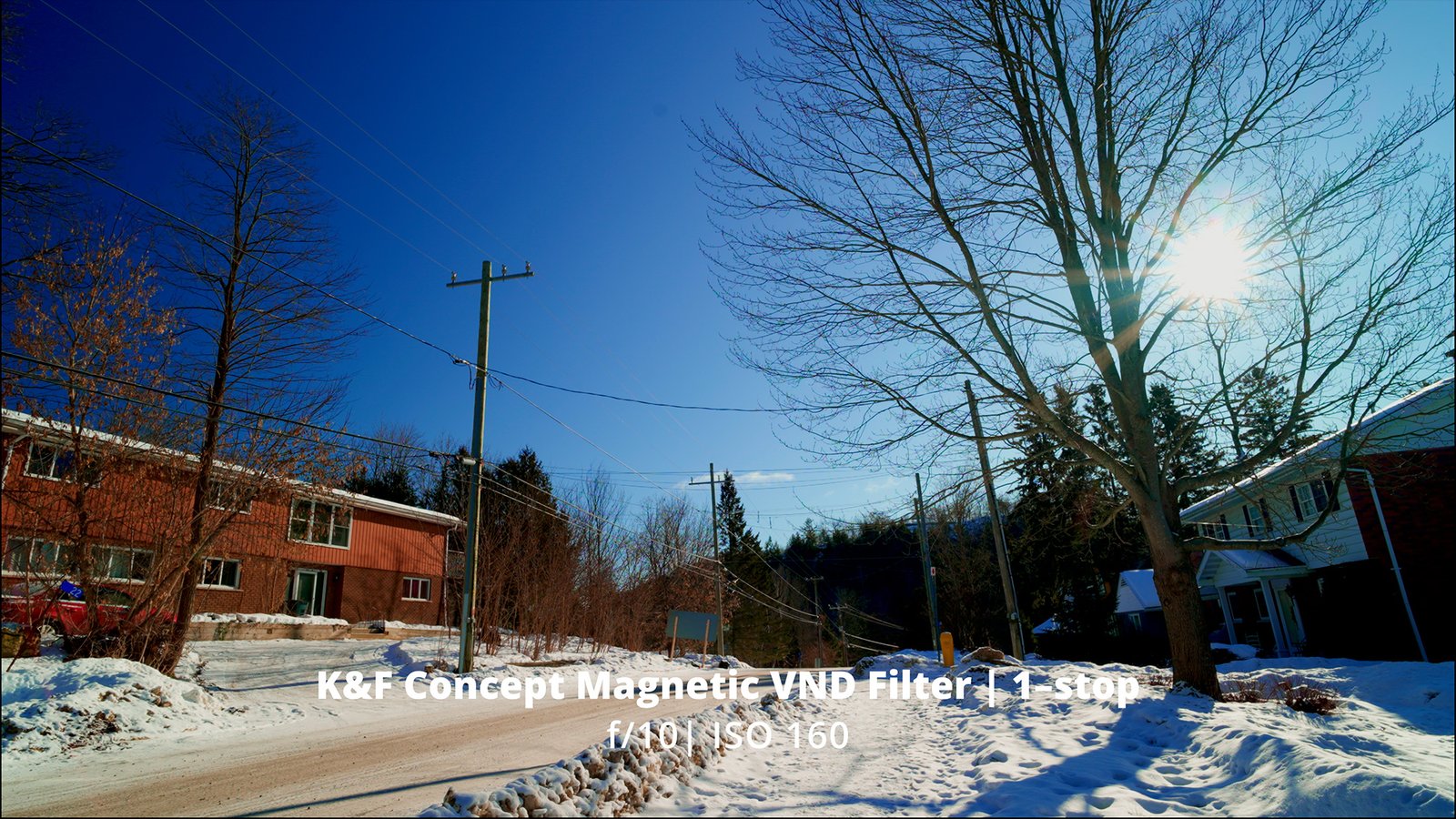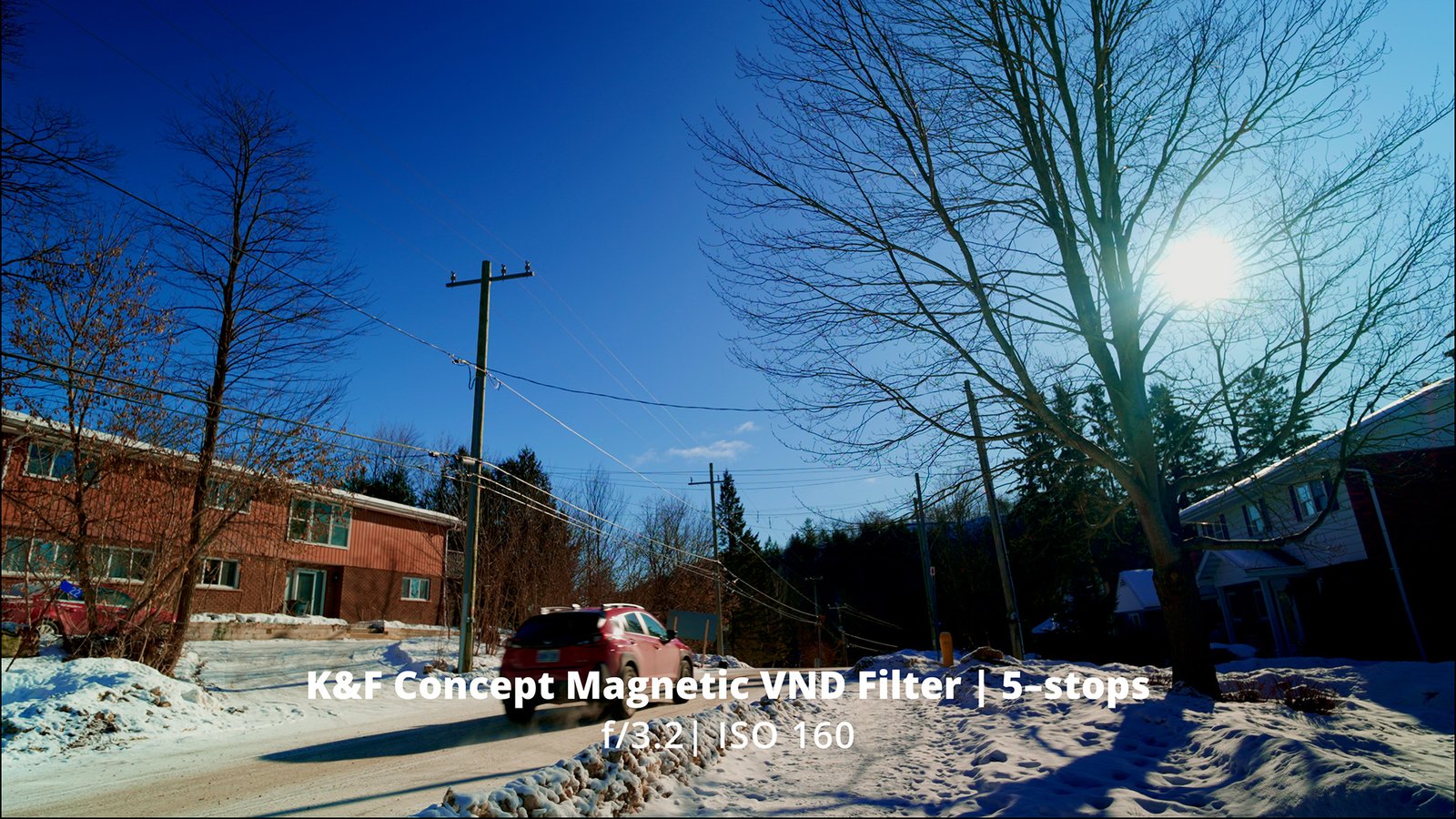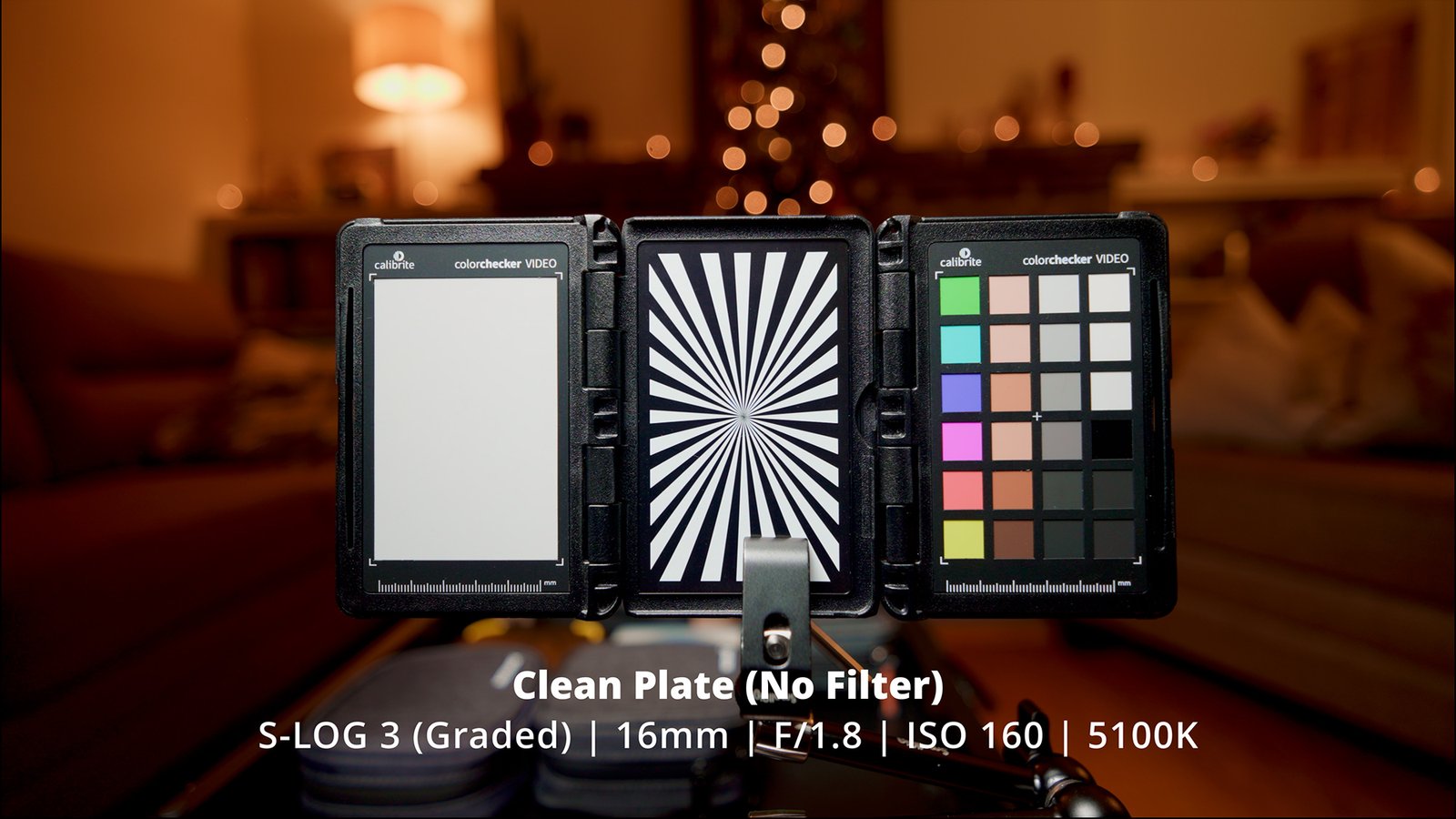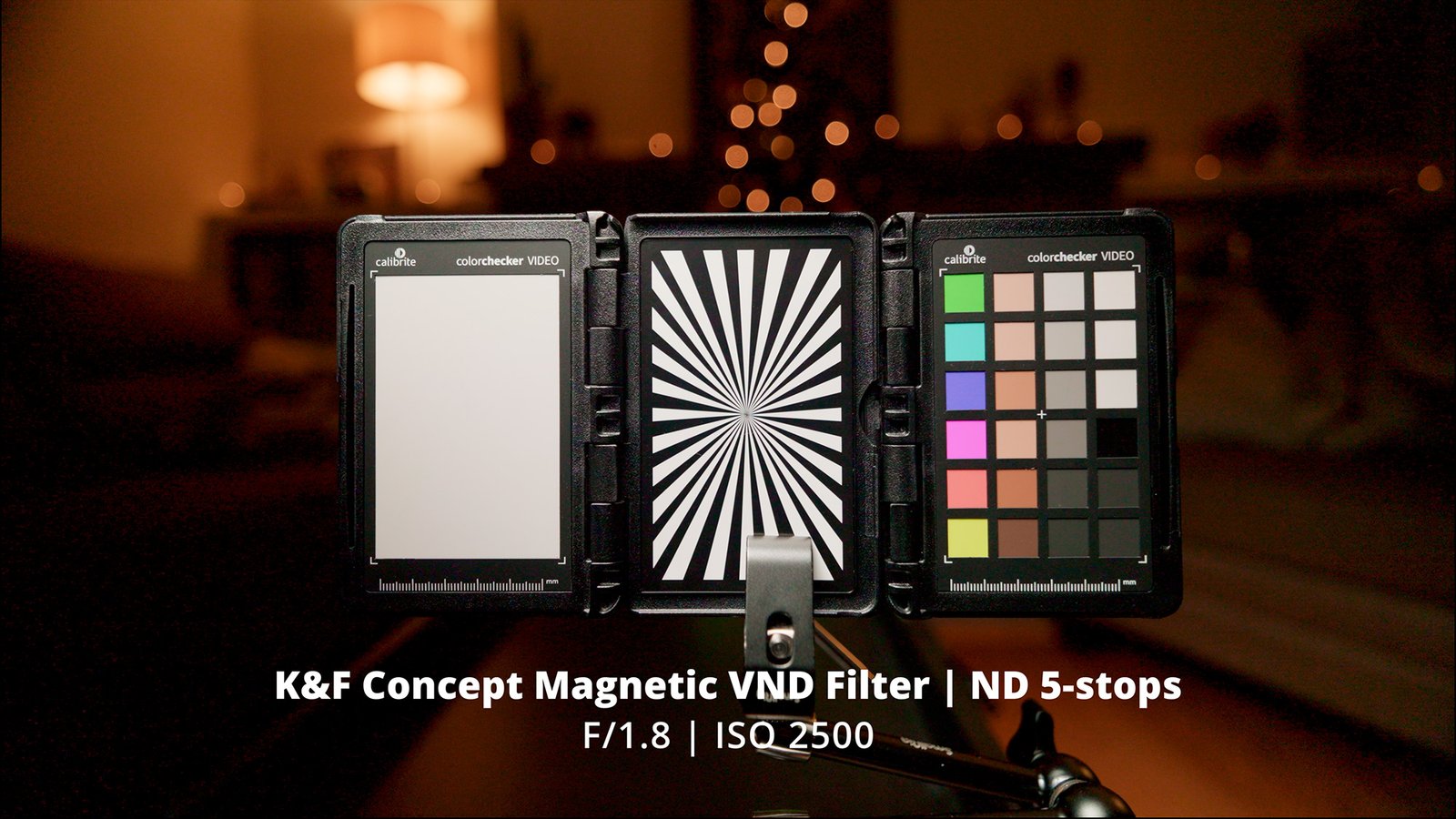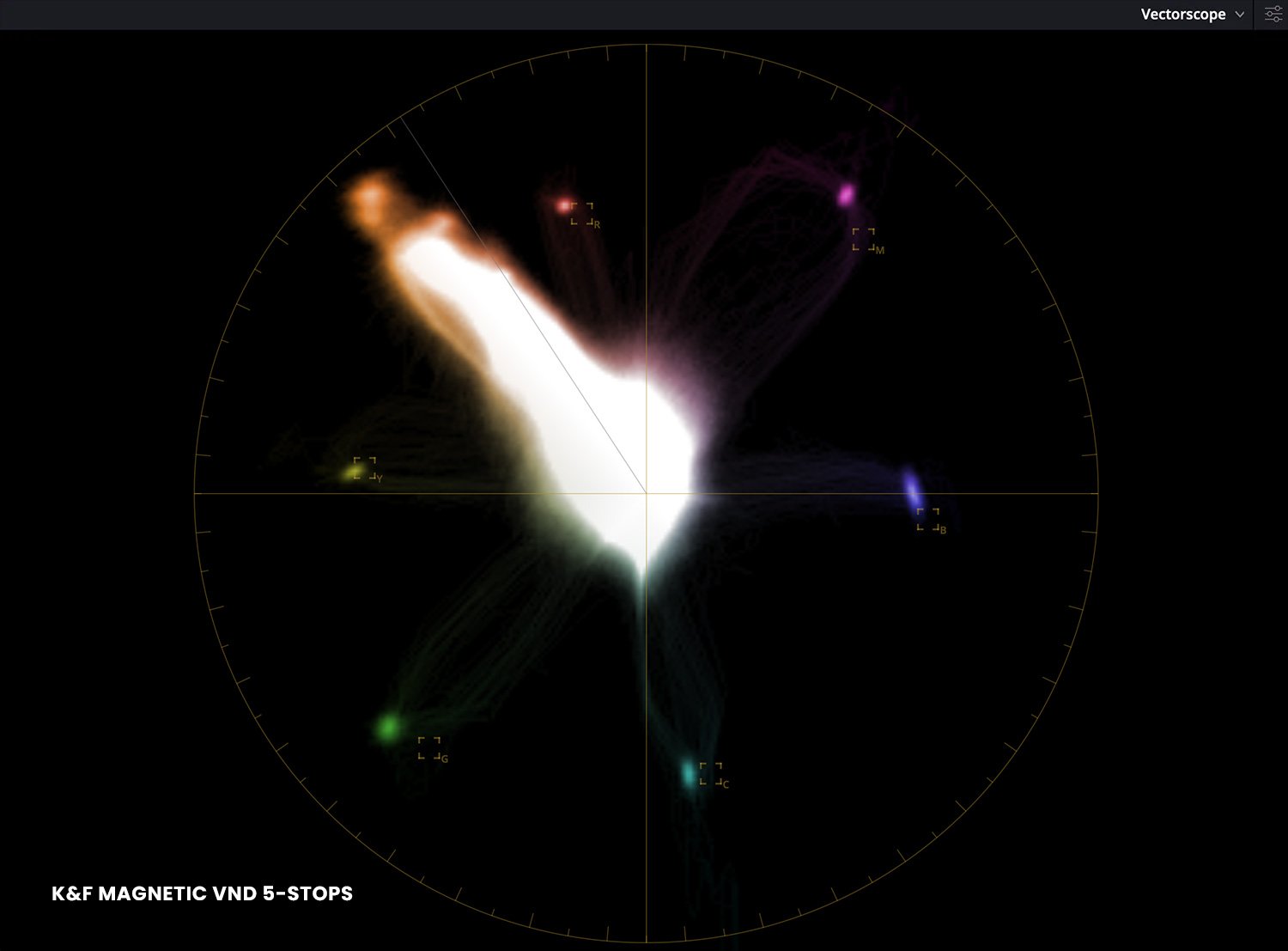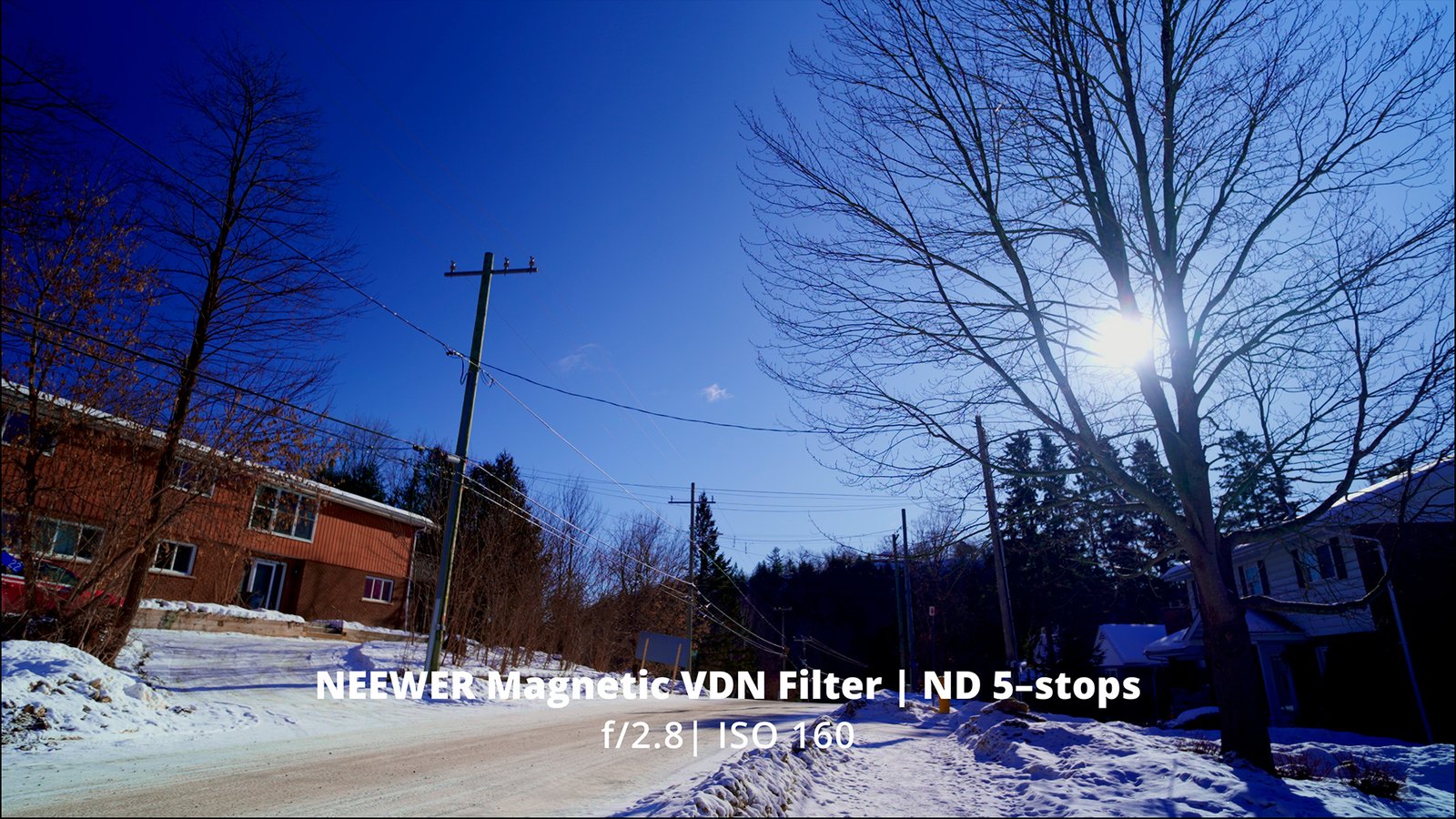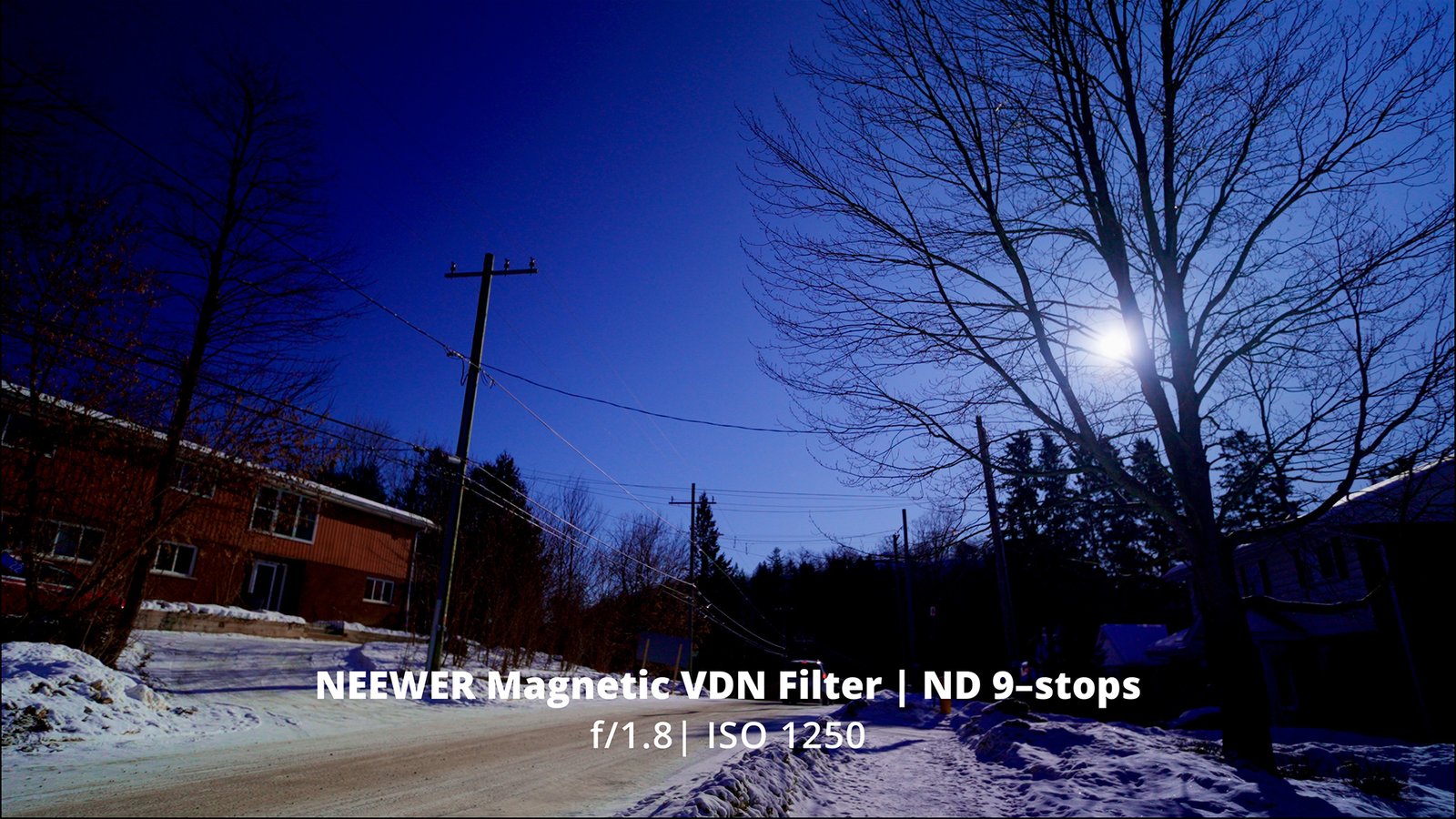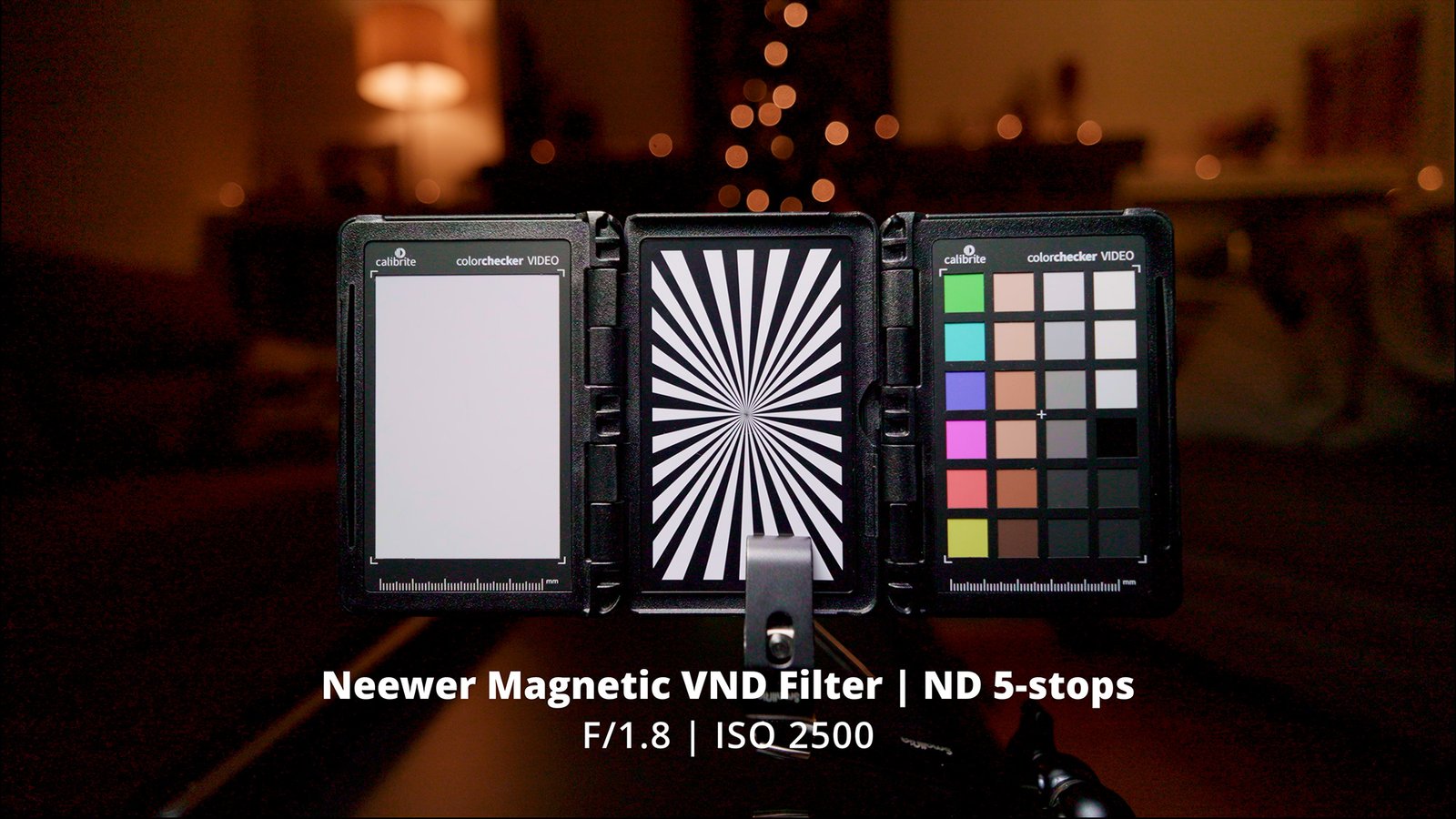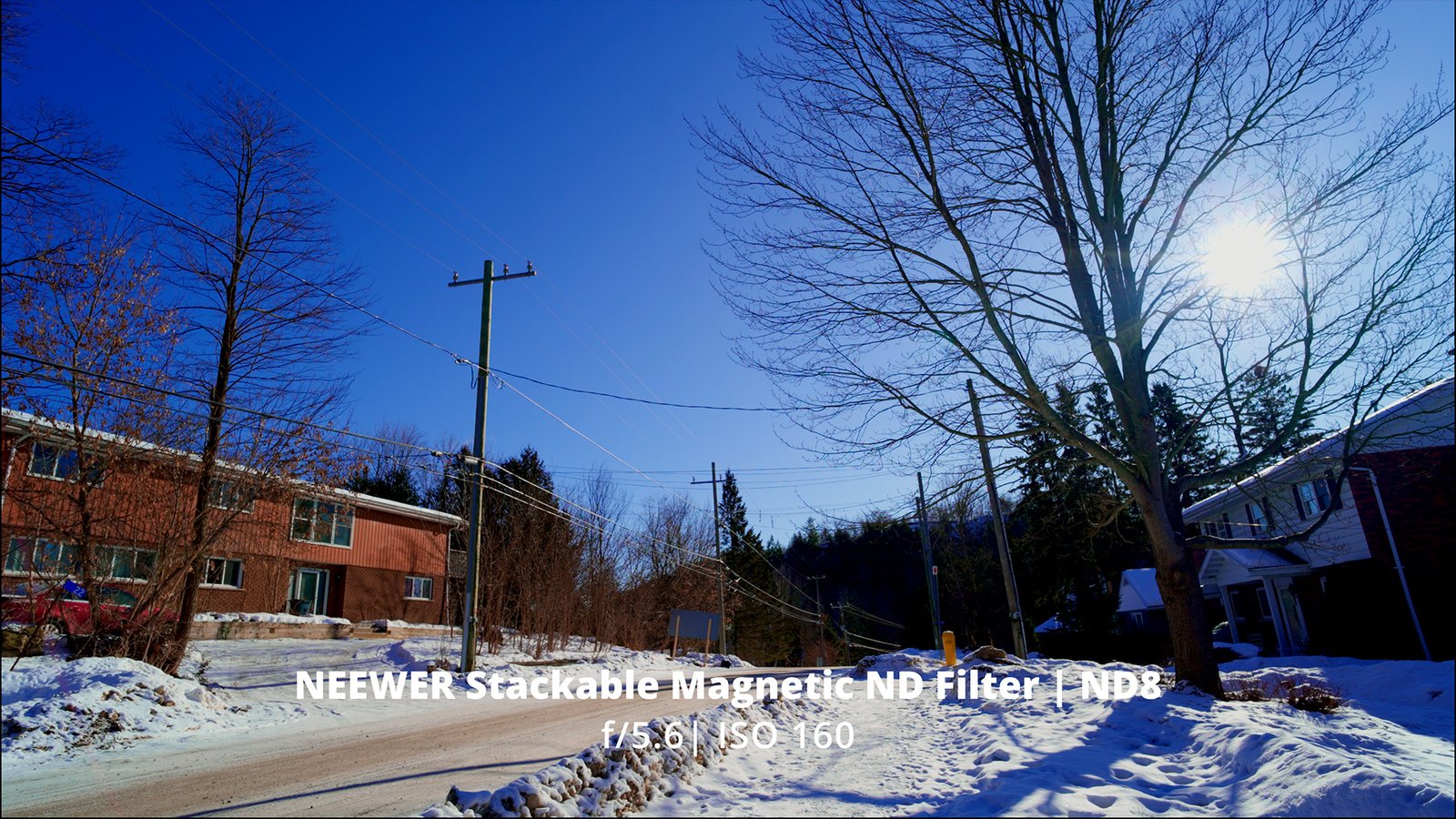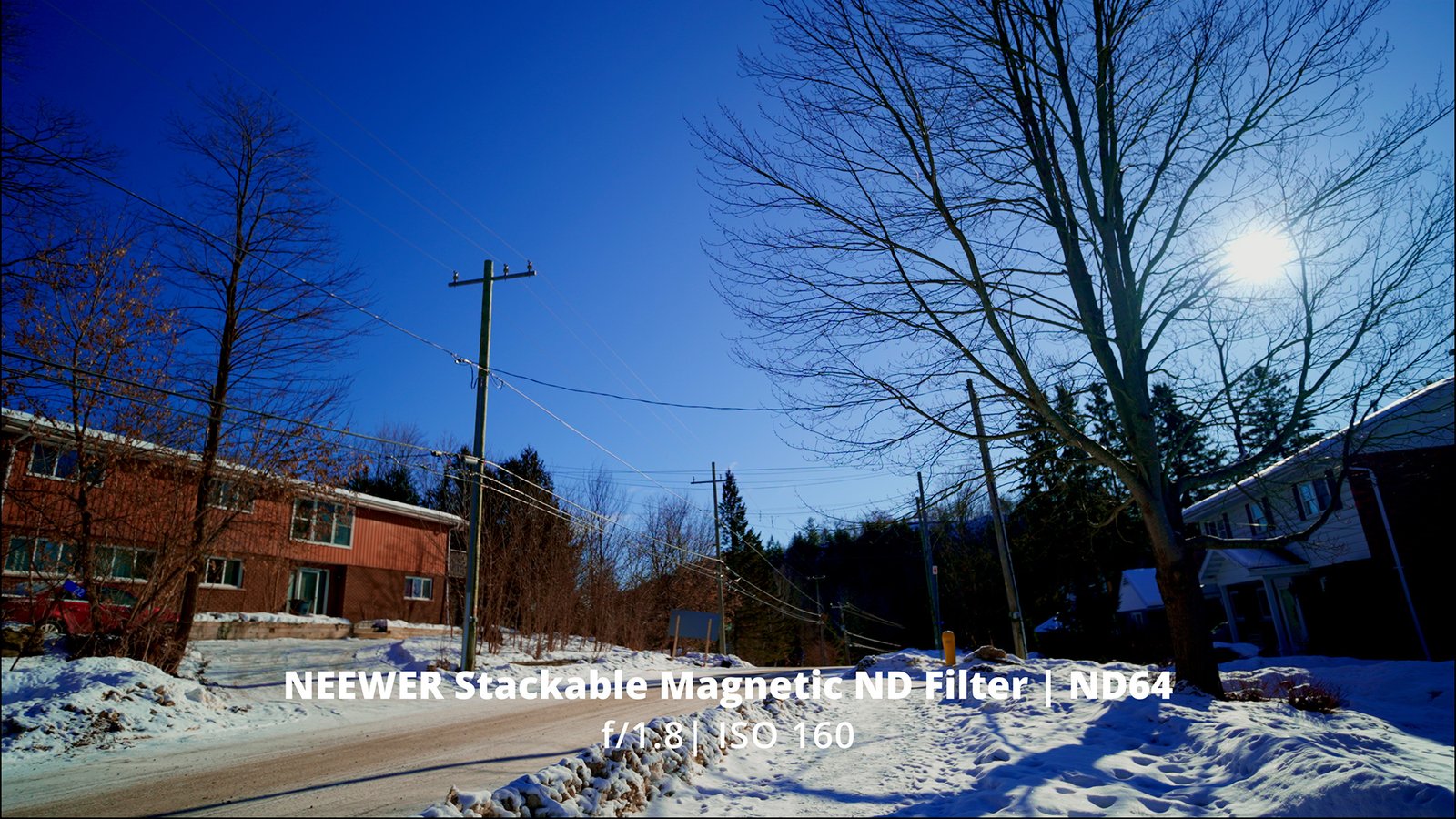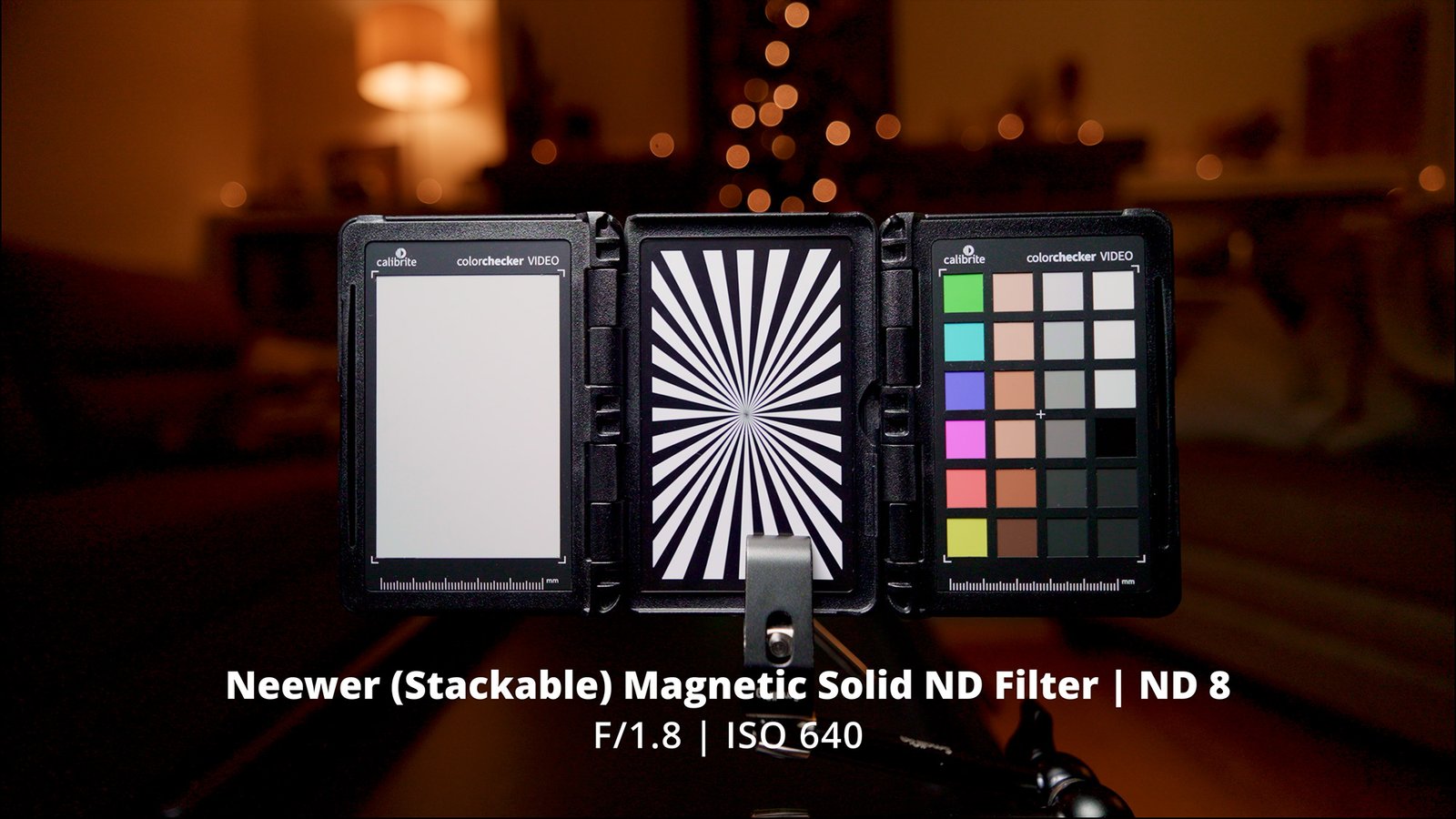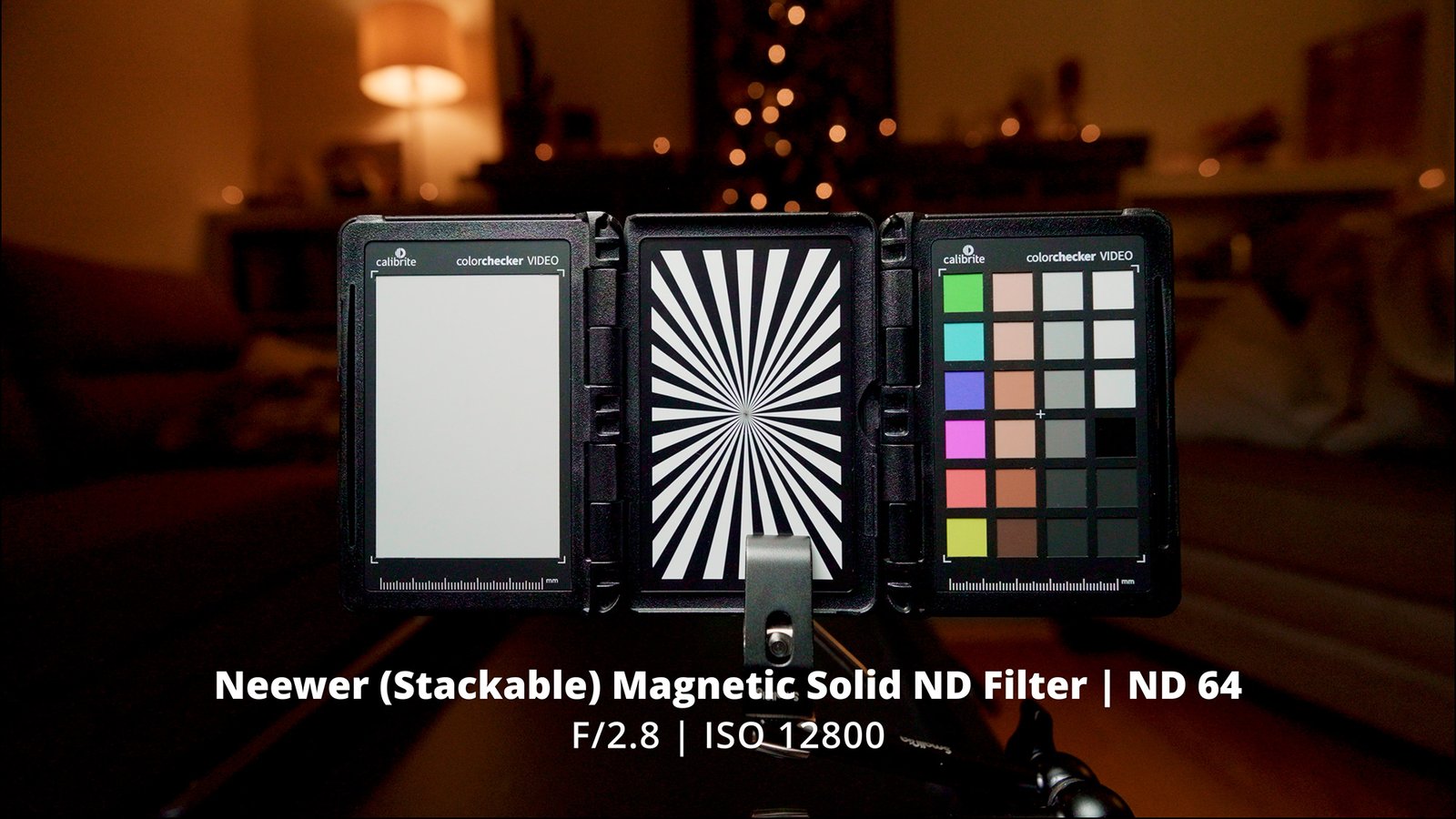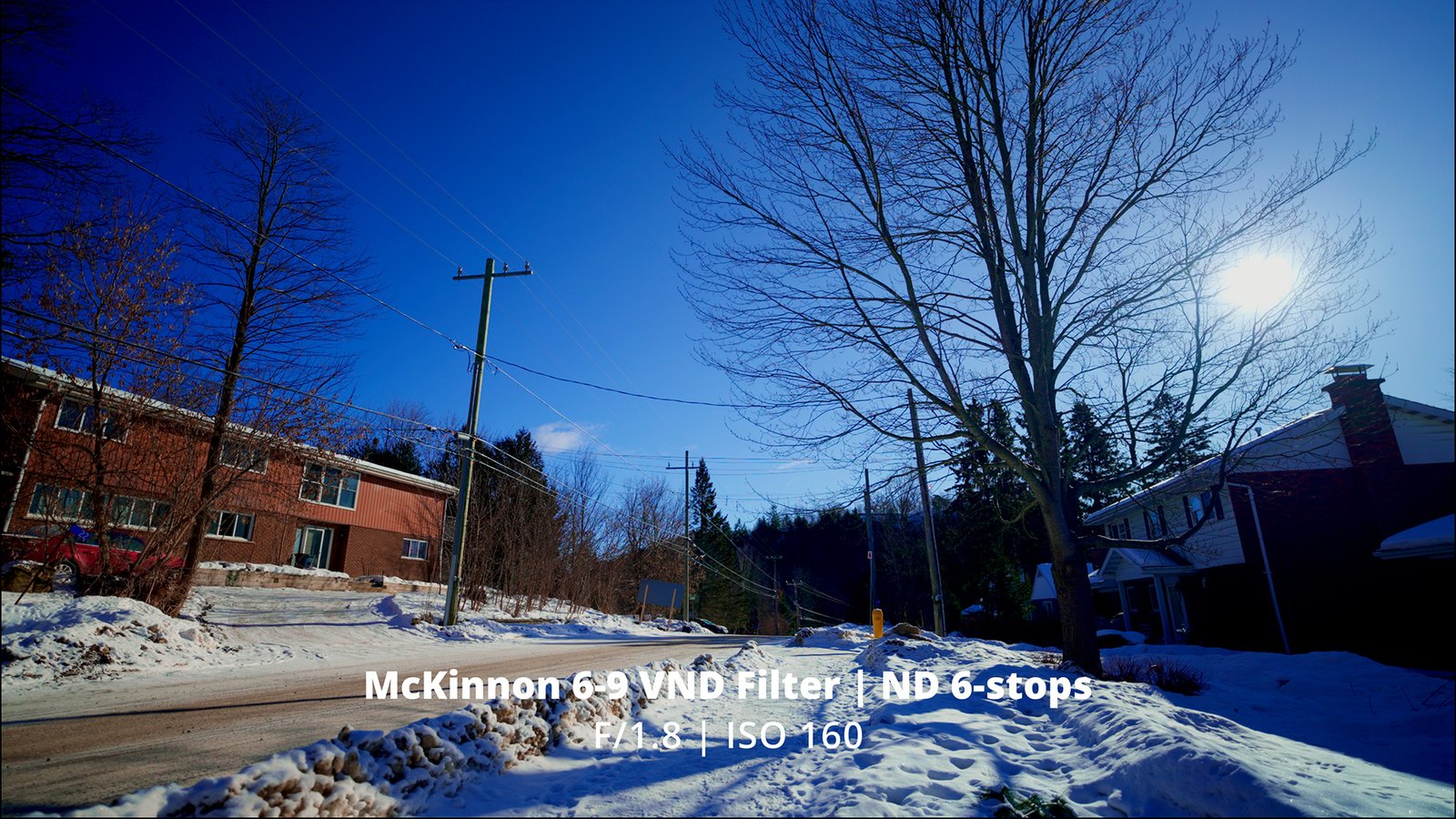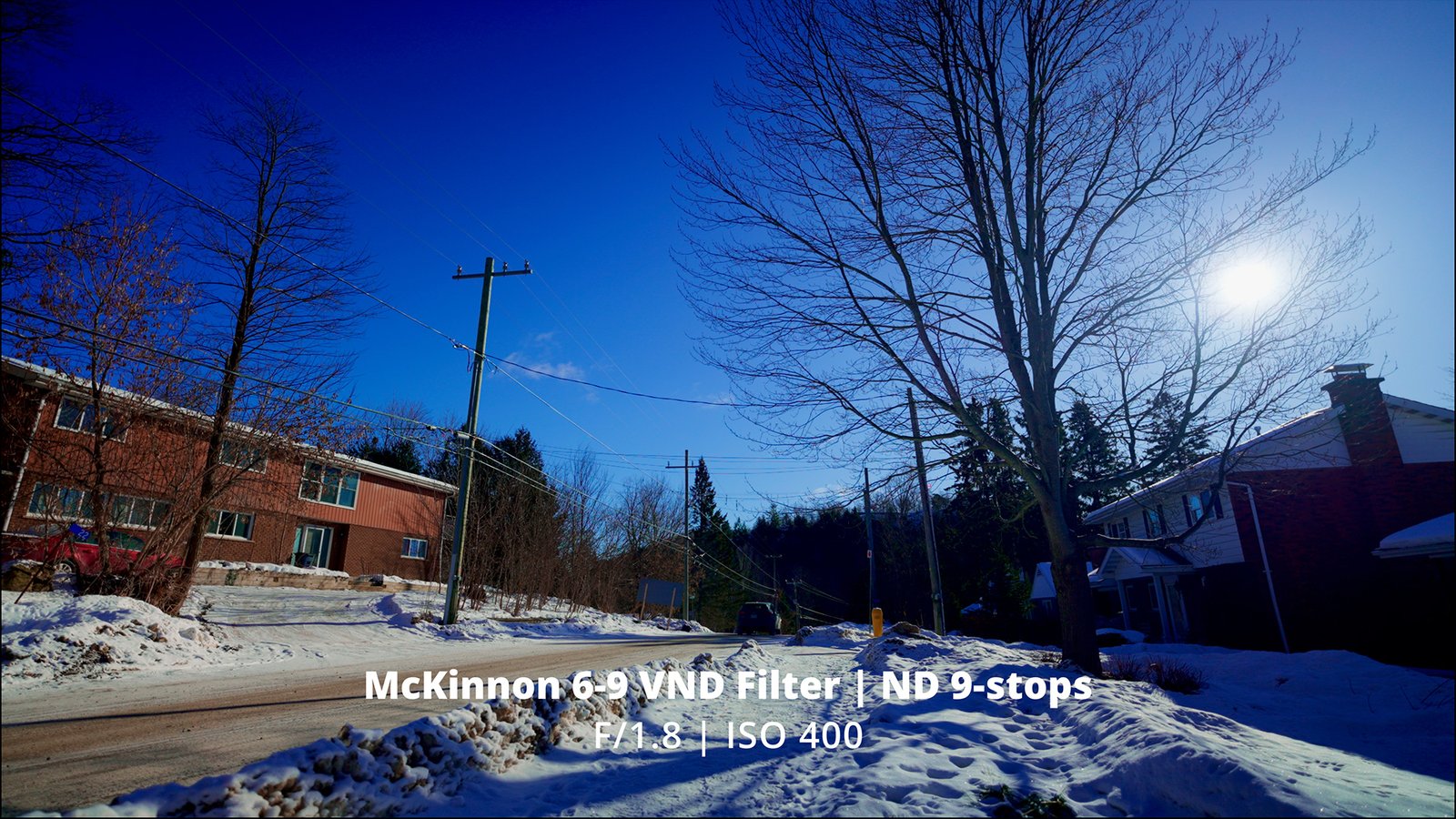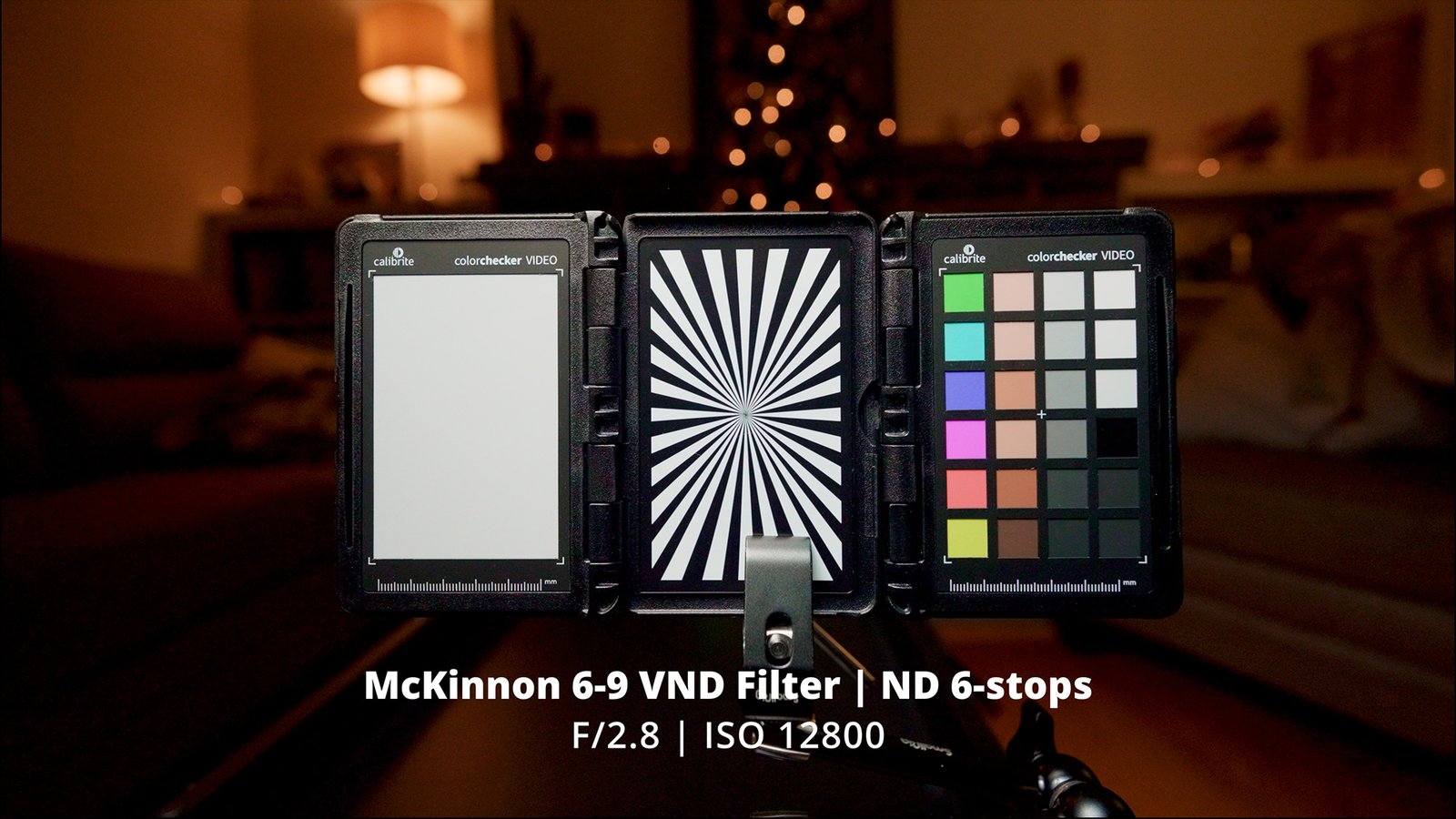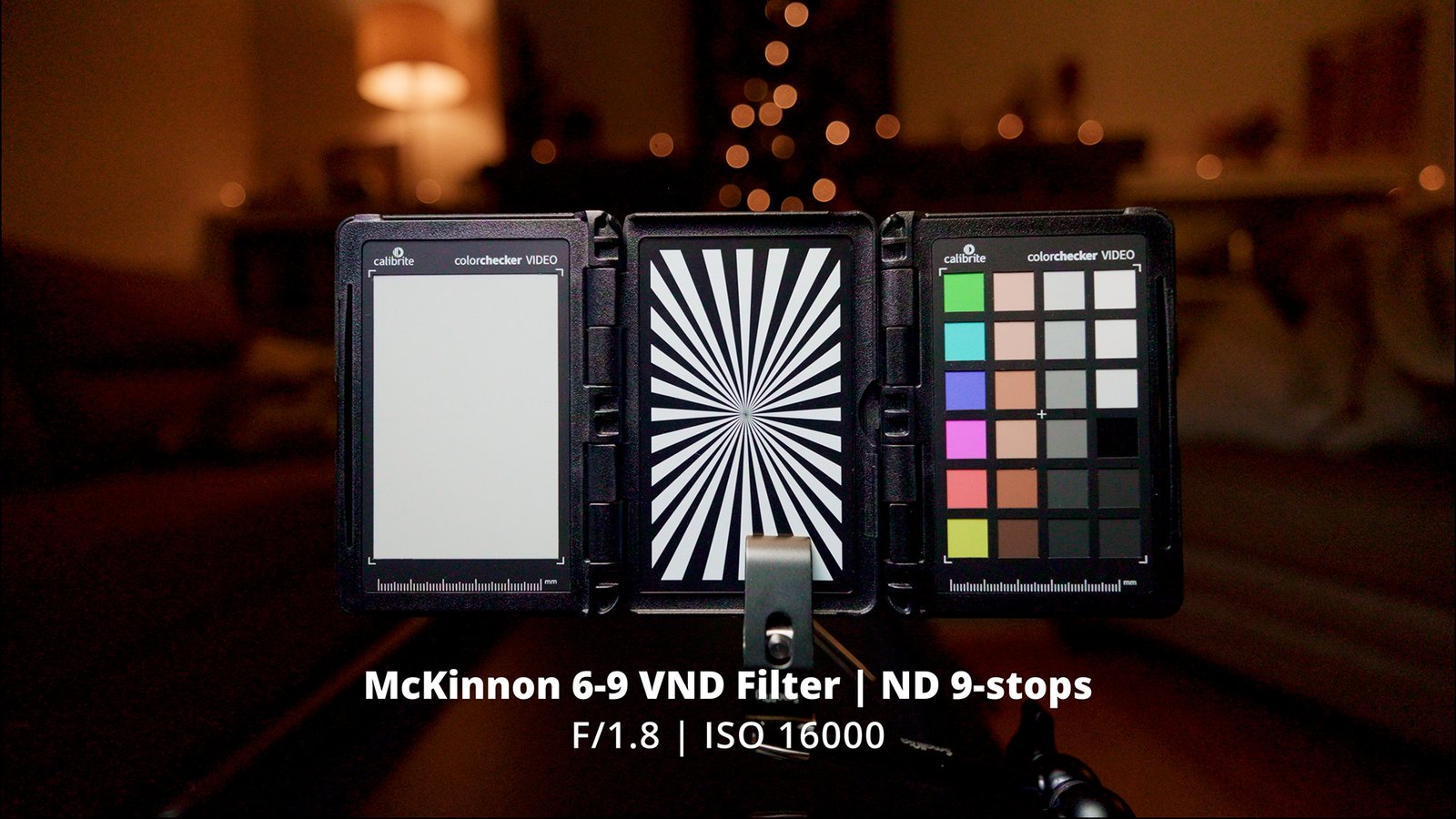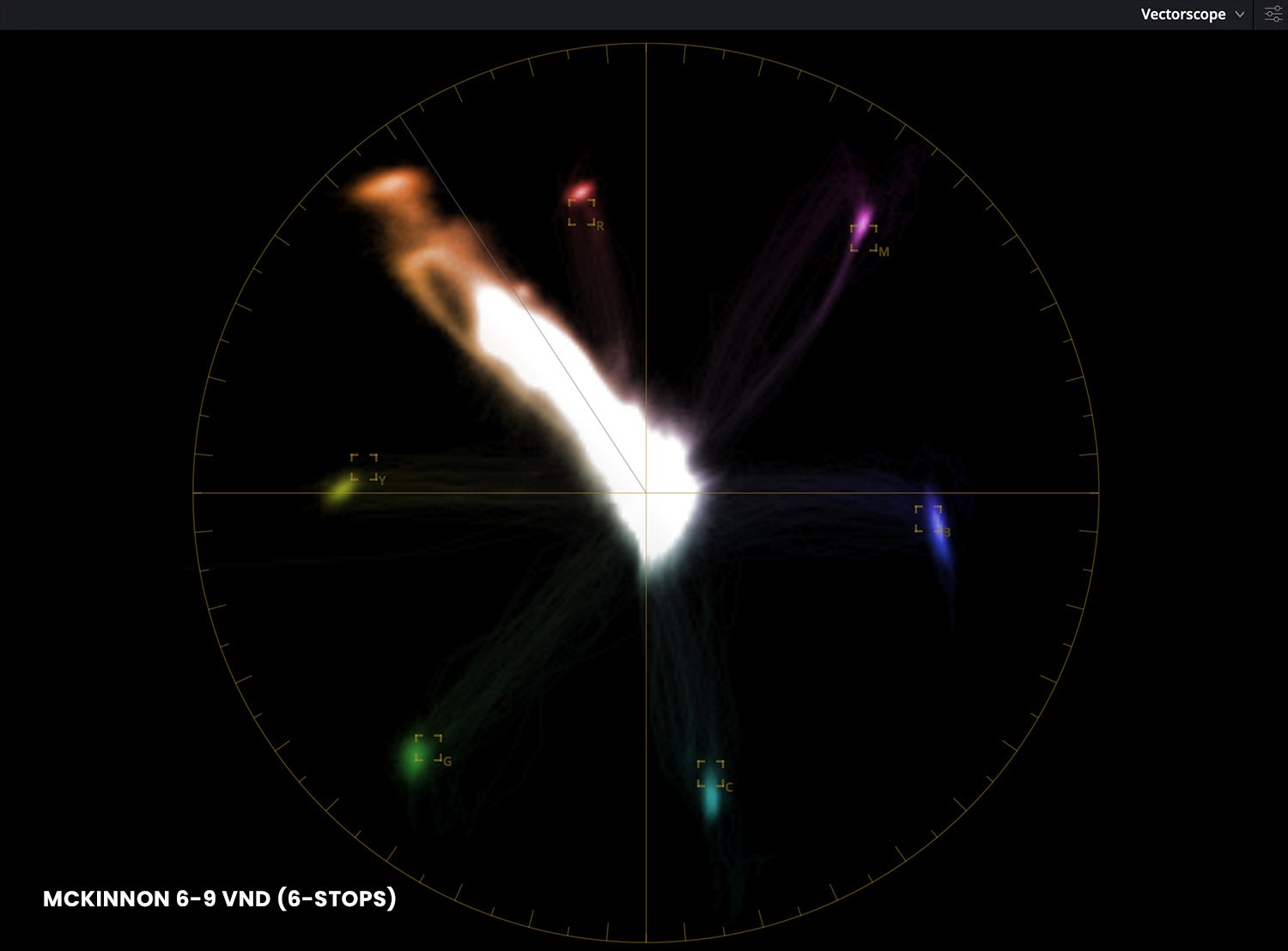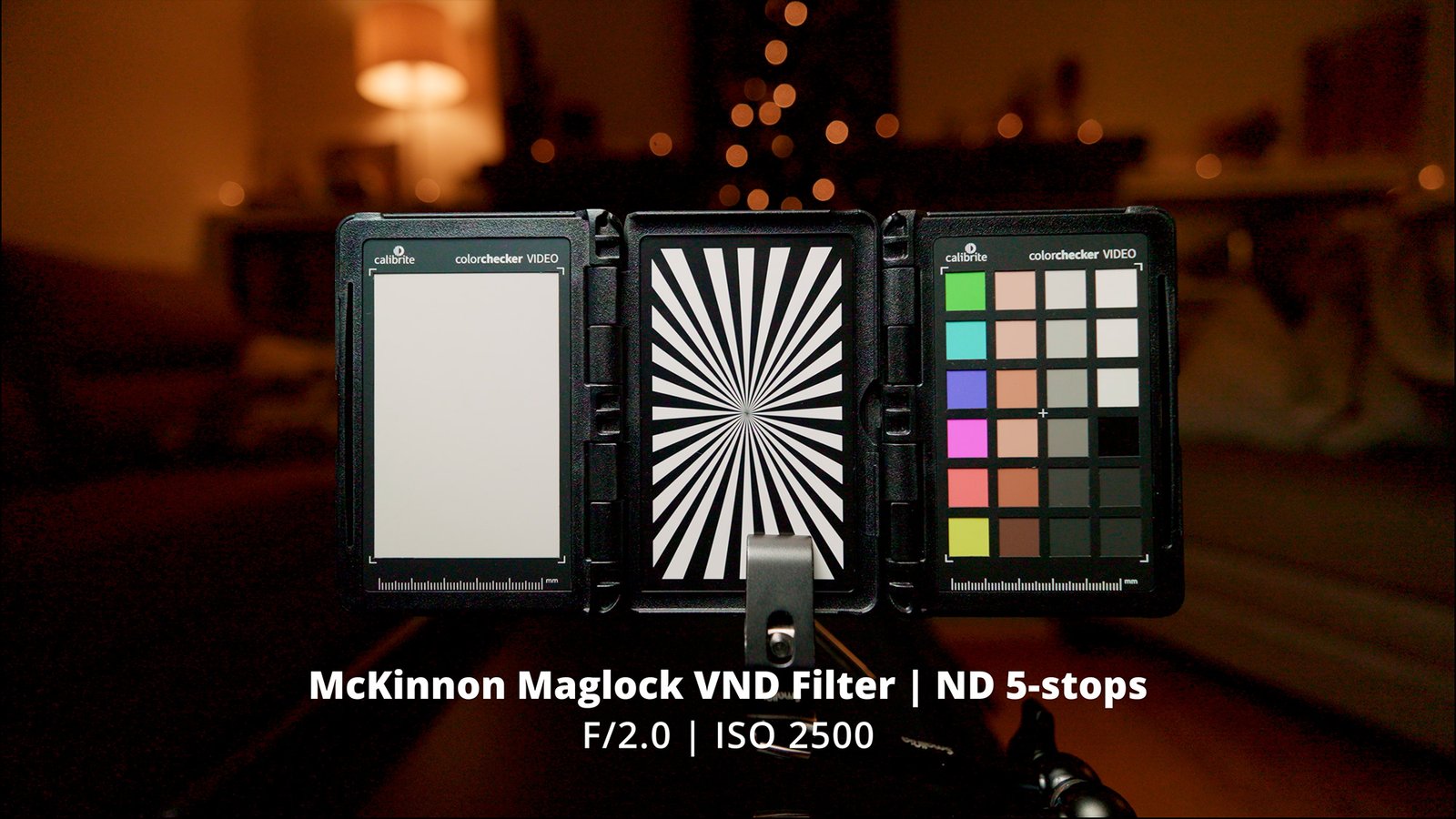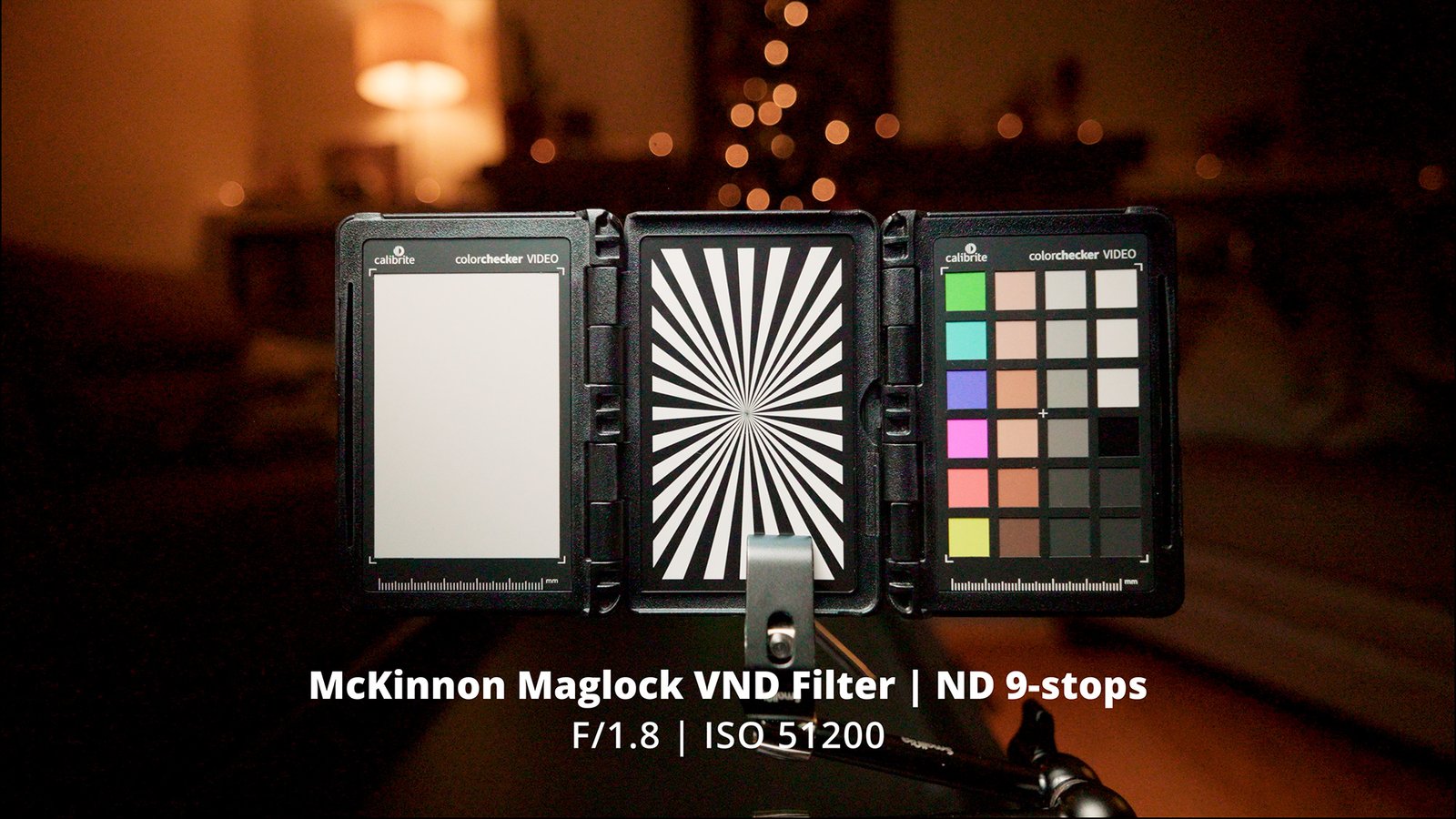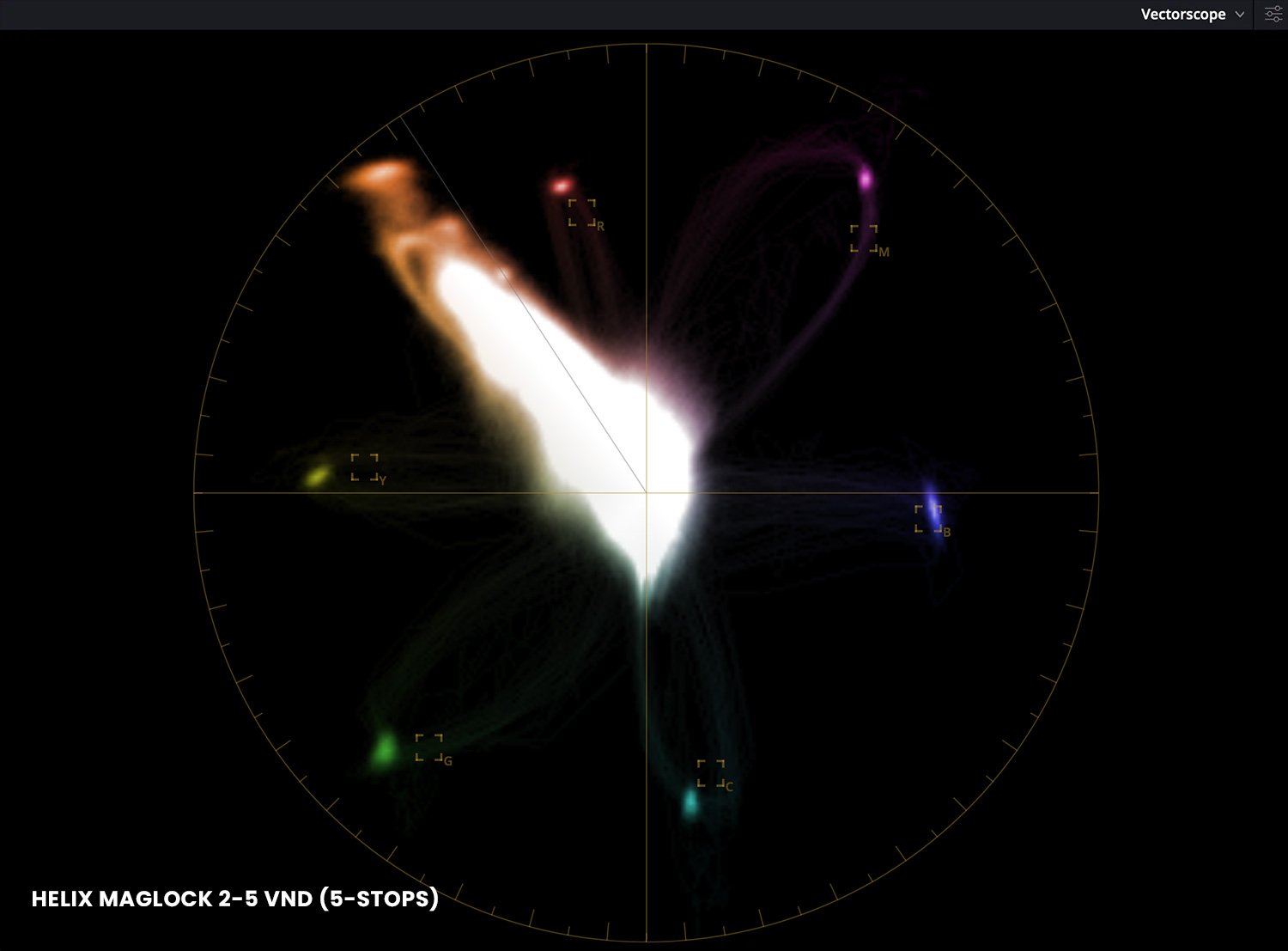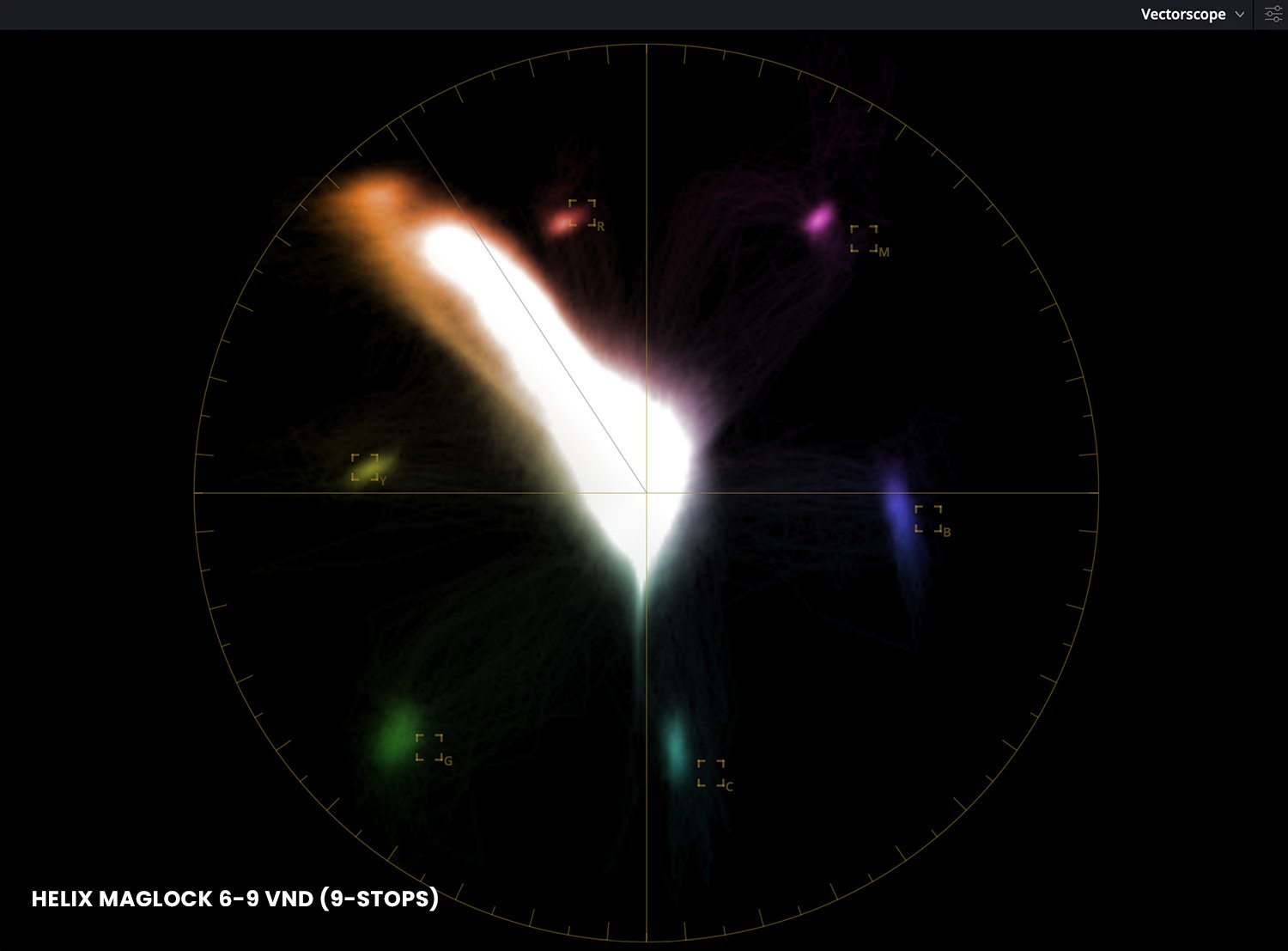If you’re looking for the best budget magnetic variable ND filter, then this article is for you.
Are you wondering if the really expensive PolarPro Helix Maglocks are worth that much extra? Or are you on a budget and need a realistic option for good glass for all your lenses that isn’t going to require remortgaging your house?
Don’t get me wrong… If the only way to get good results is the expensive option, I’m willing to save up for it.
After all, as a professional, I want to make sure I’m not compromising the quality of my work. But, I’m all for budget videography gear—especially if there is a budget magnetic variable ND filter option that gave great results for a reasonable price, I think we’d all be open to that!
The TL;DR—Get to the point!
I know, I know. We’re all busy—so if you don’t have the time to read the whole article or watch the video, here’s the long and short of it.
- The best budget magnetic VND I tested was the K&F Concept Magnetic Variable ND Lens Filter ND2-ND32. It had the best optical performance and pretty good build quality.
- The PolarPro Helic Maglock 2–5 stop Variable ND from the Helix Maglock variable ND filter systems was top notch design and build quality for top-dollar! However, optically, I wasn’t as impressed as I thought I’d be.
- The JJC True Color Variable ND filter was not actually a magnetic system but the optical quality was decent up to 5 stops. The NEEWER Versatile Magnetic ND Filter Kit was also not actually a magnetic VND and quality was not good.
- The two magnetic stackable filter sets—the K&F Concept 5-in-1 Magnetic Lens filter kit and the NEEWER 5-in-1 Magnetic ND Lens Filter Set were OK, but also felt like hobbyist-level gear.
- For the money, unless there are specific features about them (like the mist filter or CPL), I would spend my money on the K&F Concept Magnetic Variable ND Lens Filter ND2-ND32.
Now, if you’re interested in how I came to those conclusions and want to see the results of my testing for yourself—keep reading.
I decided to write this article because I was frustrated and not finding the info I needed to make that decision.
All the reviews I found didn’t really compare the most popular budget magnetic variable ND filters to the more expensive Polar Pros in an objective way to figure out if they really made a big enough difference to justify the price gap. So I hope that this will at least help someone else out there to figure out what’s best for them. (After all, I already spent all the time and money doing the research—I figured someone else other than just me should benefit!)
I bought or borrowed all these filters myself—so, I’m not a paid sponsor, no brands sent me anything and all the opinions here are my own after trying out each product myself. There are affiliate links in this review, but you are not obligated to use them—they just help me earn a little commission if you do decide to buy them on Amazon through my links at no cost to you. If you find better deals elsewhere though, go for it!
The Lineup of Budget Magnetic, Variable and Solid ND Filters
All the filters I tested were the 82mm versions since that’s the largest diameter of lens I own, and I could use step-up rings to adapt them to other lenses as needed. Here are the ND filters I tested and compared, and why I included them.
*The prices below are the prices I paid for them, but the prices may change depending on your market, availability and sales, etc.
JJC True Color ND Filter Variable ND2.5-1000 (1-10 stops) – $99.99 CAD

The JJC True Color Variable ND filter system claims to have no colour shift, no X-cross pattern, and no vignetting. It is a Multi-Coated Adjustable Neutral Density Lens Filter covering a range from ND4—ND1000 or 1—10 stops! If this filter performs well, it would be a pretty amazing deal. I included this because a YouTuber I follow recommended it—so we’ll see how it does.
K&F Concept 5-in-1 Magnetic Lens Filter Kit – $169.99 CAD
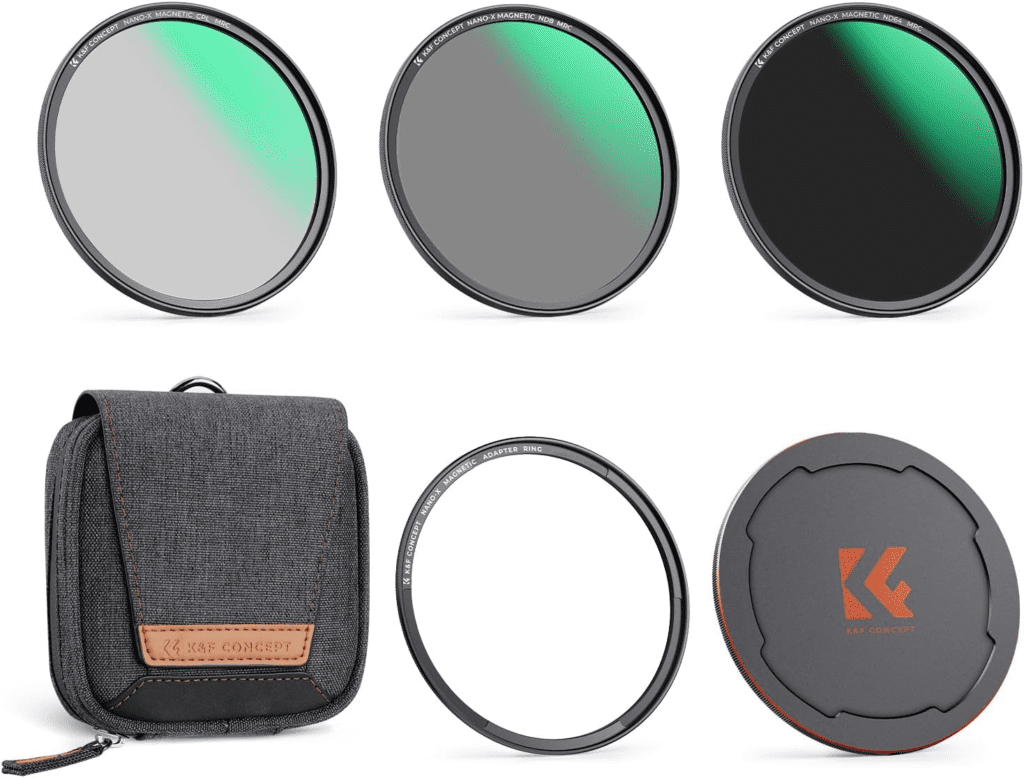
The K&F Concept 5-in-1 Magnetic Lens filter kit is part of K&F’s Nano-X Series and includes a Circular Polarizing Lens (CPL), a solid ND8, sold ND64, a lens cap and a magnetic adapter ring, It boasts of having a Multi-Layer Coating, HD Optical Glass and comes with a waterproof pouch—which TBH is kind of handy. I wanted to test and see how magnetic solid NDs would perform from these budget options since I figured that making something with less complexity might result in better quality at this lower price point.
K&F Concept Magnetic Variable ND Lens Filter ND2-ND32 (1-5 Stops) – $111.59 CAD
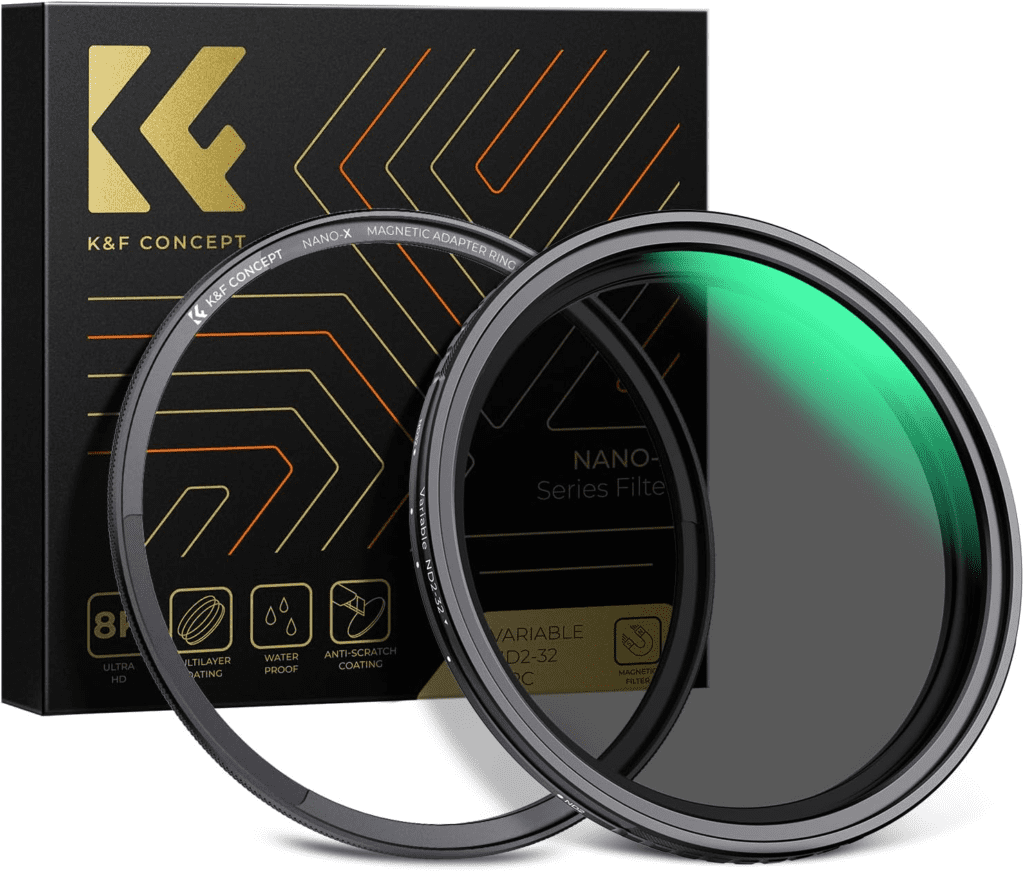
The K&F Concept Magnetic Variable ND Lens Filter ND2-ND32 is K&F’s magnetic variable ND filter system that also claims to have no X-cross pattern, and 28 Multi-Layer Coatings. It is also part of their Nano-X Series of filters. I wanted to include K&F because they are a popular budget option that seemed to have good reviews on Amazon. I was curious to see for myself how they would stack up against other filters.
NEEWER Versatile Magnetic ND Filter Kit (1-9 Stops) – $80.69 CAD
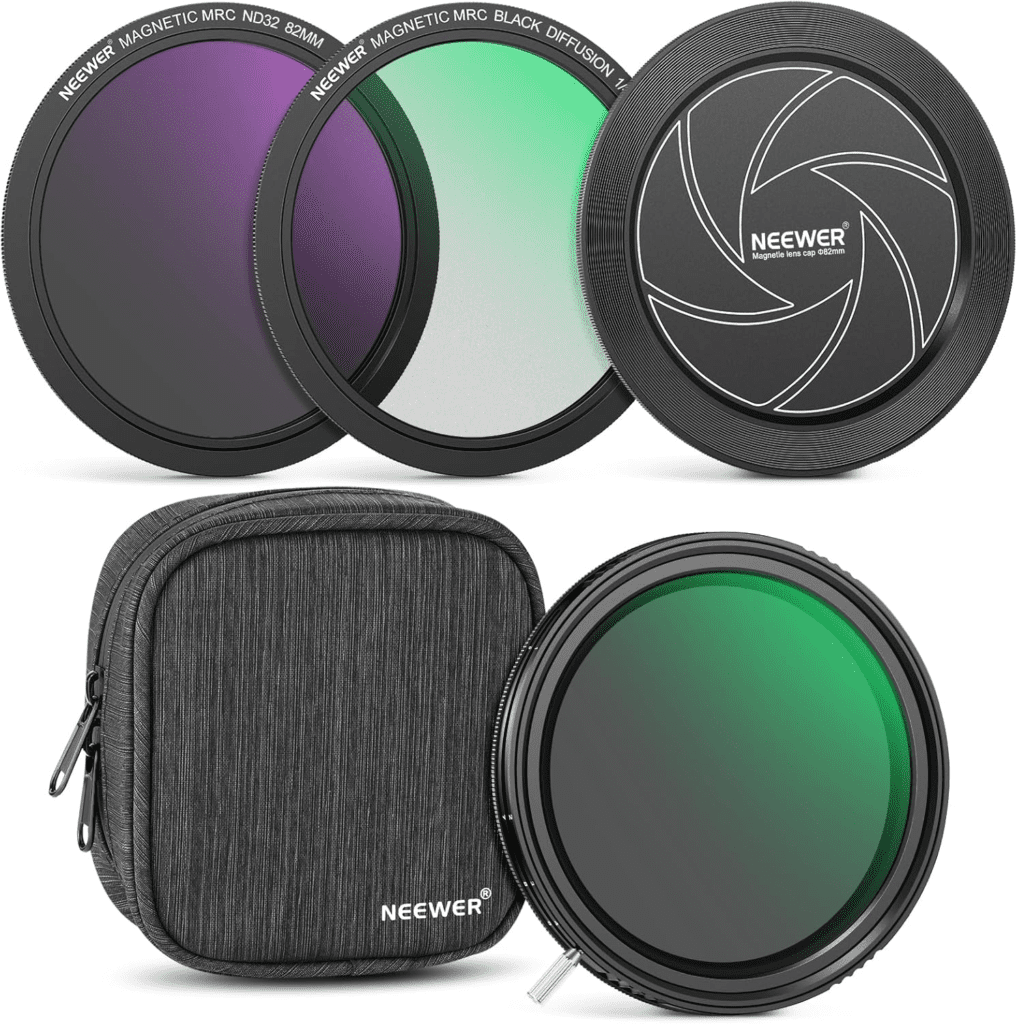
NEEWER is a well-known budget camera gear brand. I’ve bought several pieces of gear from them and been happy with the quality for the price. I mostly have bought non-optical items from them though, so this was my first time trying out their filters. The NEEWER Versatile Magnetic ND Filter Kit is a 2 in 1 Variable ND system which includes an ND2–ND32 Variable ND Filter, a stackable CPL filter, a solid ND32, a Black Diffusion 1/4 Filter, a lens cap and a water-repellent case. This kit on paper seemed to pack quite the value!
NEEWER 82mm 5 in 1 Magnetic ND Lens Filter Set – $78.99 CAD
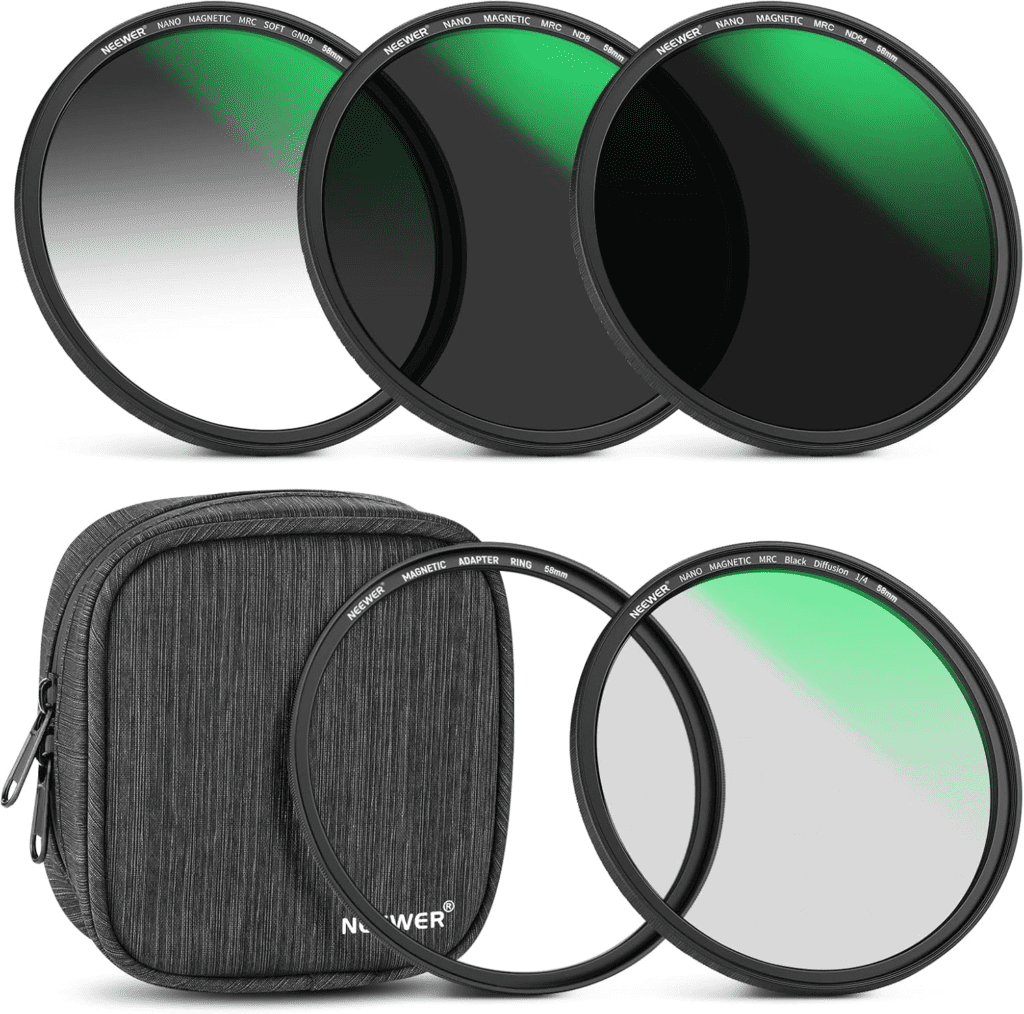
The NEEWER 5-in-1 Magnetic ND Lens Filter Set is NEEWER’s stackable solid ND filter system. It includes a Black Diffusion 1/4 Filter, Soft Gradiated ND8 filter, an ND8 filter, an ND64 filter, the magnetic adapter ring, and a case. It has HD Optical Glass, Water Repellent 30-Layer Nano Coatings and is supposed to be scratch resistant. For my intended use-case of run and gun shooting for social media content, I figured that having magnetic solid NDs might be a viable solution in place of a variable ND if they worked well.
PolarPro Peter McKinnon Variable ND Filter (6-9 Stop) – approx. $340 CAD
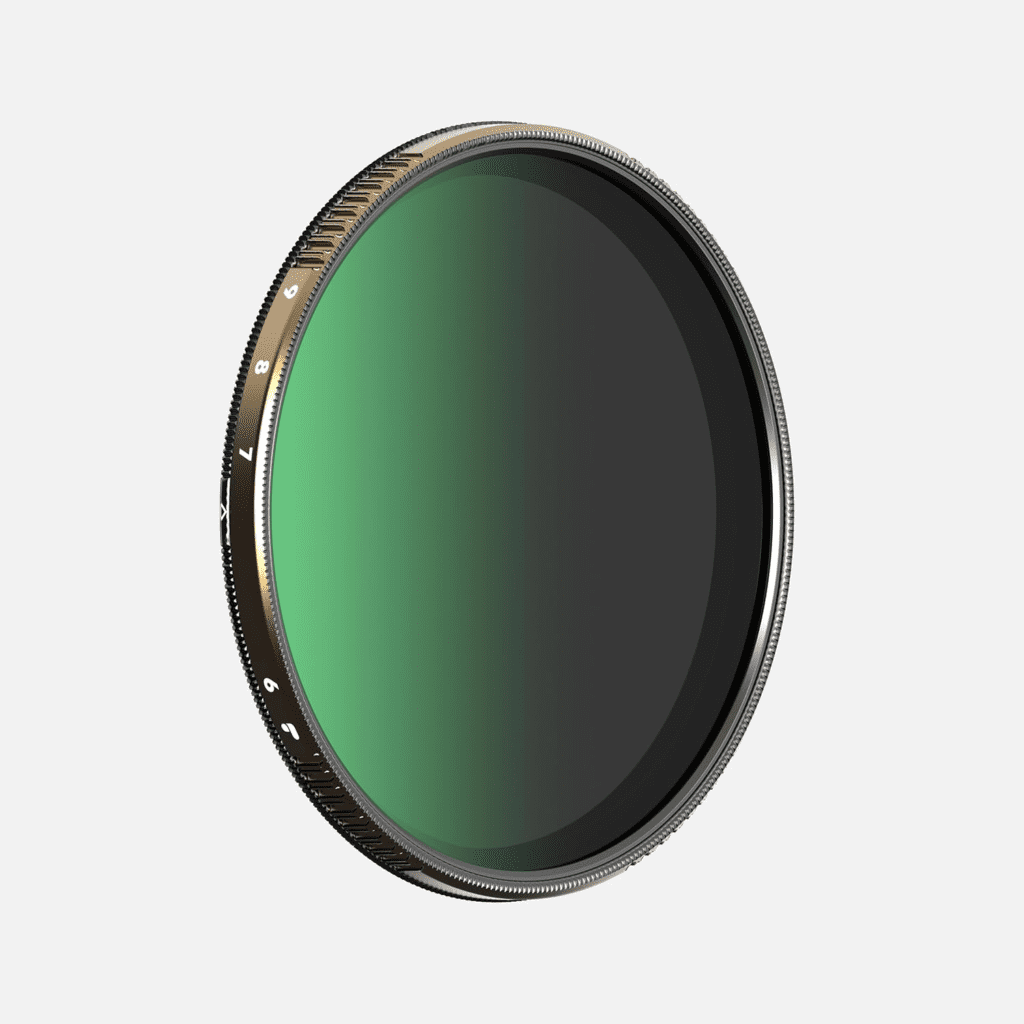
I included this filter only because I already had it for a while (it’s the first generation of Peter McKinnon’s ND filters with PolarPro) and I wanted to see how it would compare to the others. I’m not sure if the version I tested is still sold, but the Signature Edition is available on Amazon. I’ve found that 6–9 stops is often way too much ND for most video work (especially if you’re not shooting with prime lenses), unless you’re shooting in a bright noon-day sun (which is rare for me). However, when I bought this filter, it was supposed to be one of the better ones optically in terms of colour shift. We’ll see how that stand up to these newer filters.
PolarPro McKinnon Series Helix Maglock Magnetic Variable ND Filter System (2–5 stop & 6–9 stop) – approx. $460 CAD for each kit
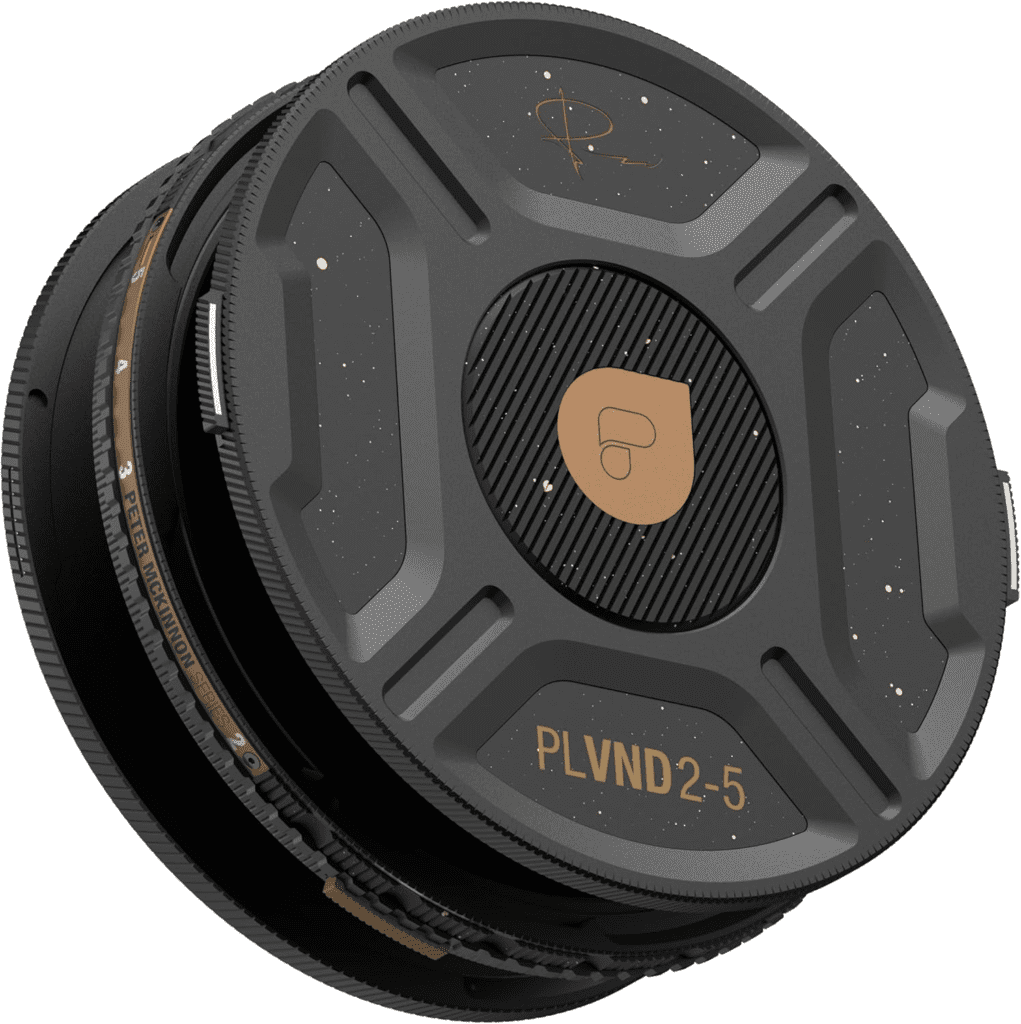
This is the holy-grail of variable ND filter systems. It’s a premium filter set with a hefty premium price! I could literally buy all the other filters together and not spend as much as one of these Helix Maglock variable ND filter systems. They are quite the rave now, and there is a lot of hype surrounding them. So, I wanted to see if they were really worth that premium price tag. This set was generously loaned to me by a work colleague. I tested both the PolarPro Helic Maglock 2–5 stop Variable ND and the 6–9 stop Variable ND (though the kit I was loaned also included the Mist filter, BlueMorphic and GoldMorphic filters).
How I tested the filters
I decided to test these filters in two main ways: in a controlled setup and in a real-world scenario.
For the controlled scenario, I set up a controlled lighting environment using fixed lighting at night so there would be no shift in the lighting at all. I shot a colour checker card through all the filters I was testing with the Viltrox 16mm f/1.8 lens on my Sony ZV-E1 mounted on a fixed tripod. Using a super-wide angle lens like the 16mm shows the most vignetting you can expect out of these filters. So, you could expect less vignetting with any lens with a longer focal length (more zoom). I also figured that showing the performance on a full frame sensor with a 16mm lens would be handy for those who want to use these filters for real estate or other wide-angle use cases.
I shot a clean plate without any filters and kept all the settings the same for testing each filter. I used an external monitor with false colour to try to keep the exposure consistent as I tested the varying levels of ND on the filters by adjusting the light intensity and the camera’s ISO and aperture. Having the colour card in the shot would allow me to clinically analyse the colour shift from the filters using my scopes in DaVinci Resolve. All of the footage was graded and processed in exactly the same way to maintain consistency and remove as many variables as possible.
For the real-world scenario, I shot outdoors into direct sunlight to see how each of the budget filters would perform in terms of vignetting and lens flaring. I chose to shoot the same scene at around noon on a clear day when I would have the most consistent lighting possible outdoors. Exposure was checked using the camera’s internal metering and adjusting the ISO and aperture. All of the footage was also graded and processed in exactly the same way in post.
Once I got these results, I tried to look at them objectively both using DaVinci’s scopes and my eyes. Since a lot of my work is social media content for businesses, I also factored in how each filter performed in terms of build quality and design for shooting in a run-and-gun situations.
The Results
Below are my results after testing each filter. I’ll include screenshots of the footage from each filter, some scopes from DaVinci Resolve to show the colour shifts, etc., and my comments on the build quality and my experience shooting with it.
JJC True Color ND Filter Variable ND2.5-1000 (1-10 stops)
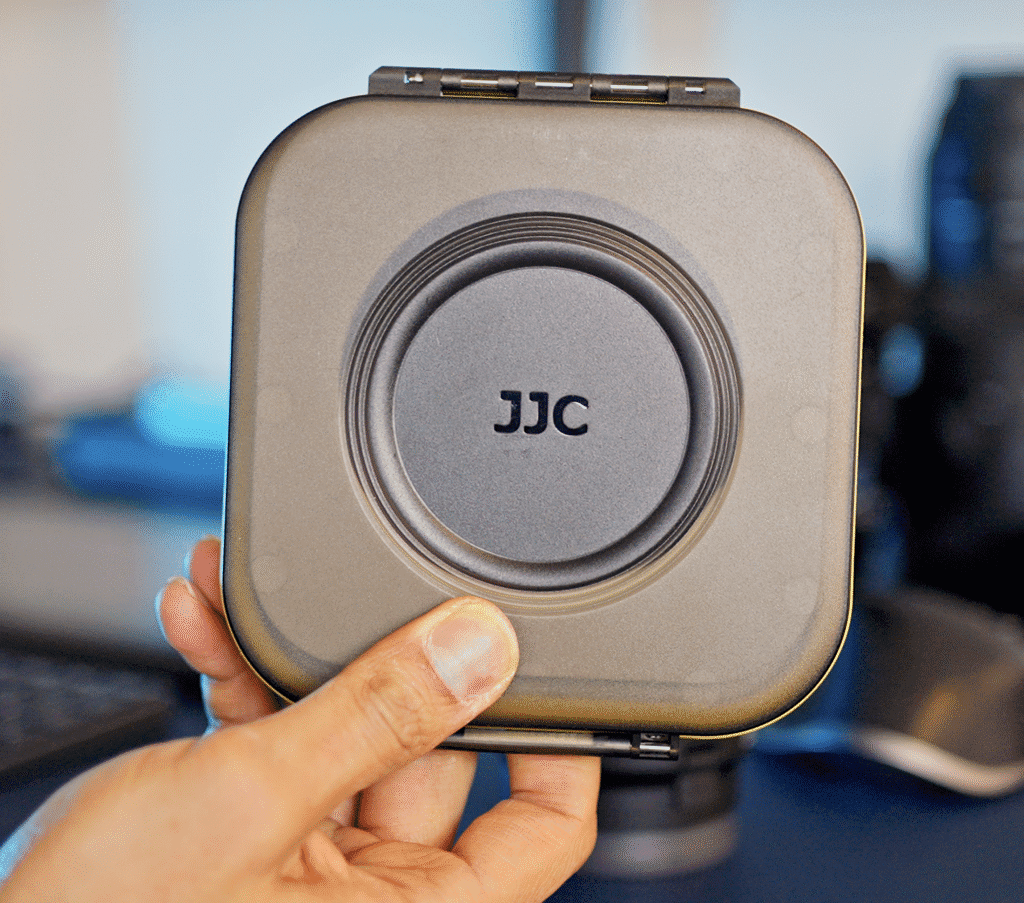
This filter comes with a hard carrying case. However, it does not fit the lens cap—which is a huge bummer!
Now, something to note here is that this filter does NOT have a magnetic base plate. Which means that you still have to screw the filter on to your lens. So, don’t be fooled—this is not a magnetic filter system. Instead, it has a magnetic solid ND that you can stack on top of the VND to shift its range darker. This sounds like a cool solution, but as we’ll see later—it introduces more colour shifts and vignette to the image (plus you’re adding another layer of glass between your image and the camera’s sensor).
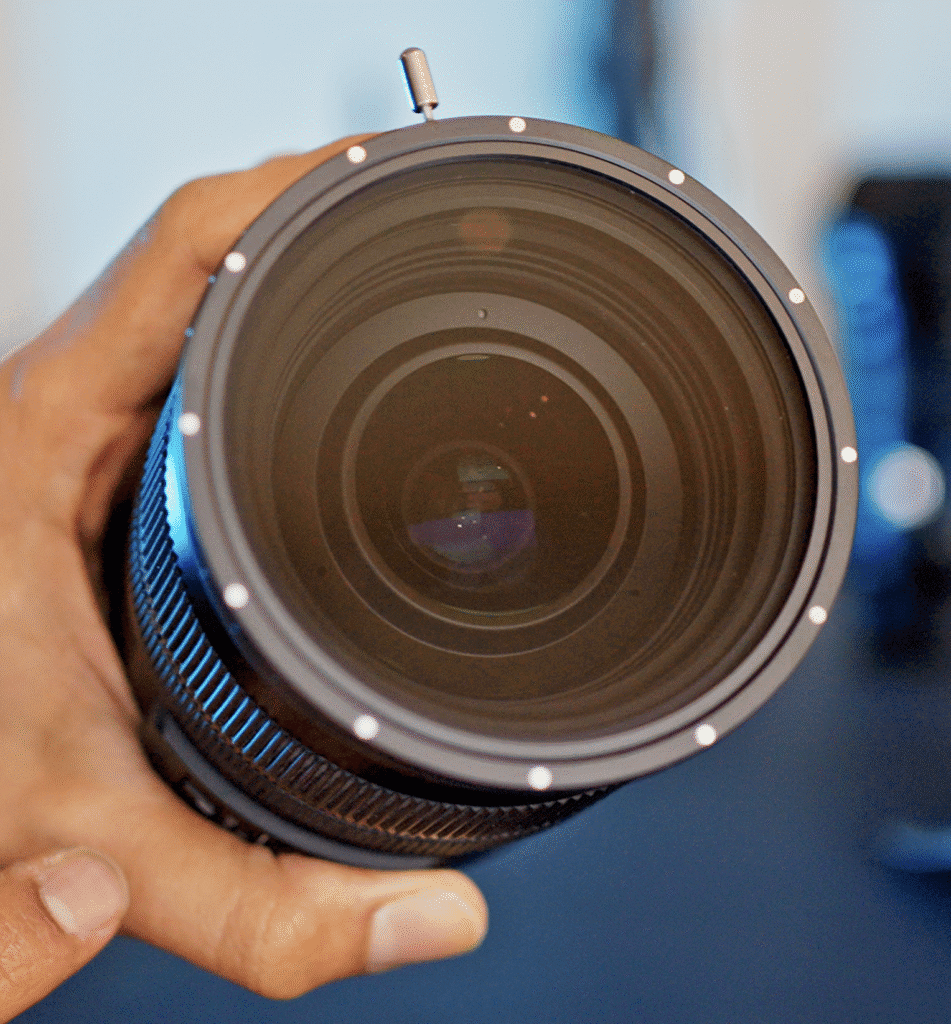
The base VND filter goes from 1—6 stops of ND. It also has a handy little tab to help you smoothly adjust the level of ND without getting your fingers in the shot. I found that this little feature was something I appreciated in the kits that had it—however, it does make it a bit more clunky for packing into a camera bag. I found I was always worried the metal tab would break off—especially if I were to shove this VND into my back pocket, which I am prone to do on run-and-gun shoots. But, if you keep it in the case (which doesn’t fit the lens cap! SMH), there’s no worry.
This filter at ND1 is very clear—and that might be a pro for you if you are looking for something you can just leave on your lens. ND1 doesn’t really change your exposure much. So, in a pinch you could just keep it at that and bump your ISO up slightly for shooting indoors instead of screwing the filter off completely. The VND does have hard stops at either end to make sure you don’t go past the useable range, however, as you can see in the picture—there was a marking past 10 of “C” which I’m not sure what that’s about.
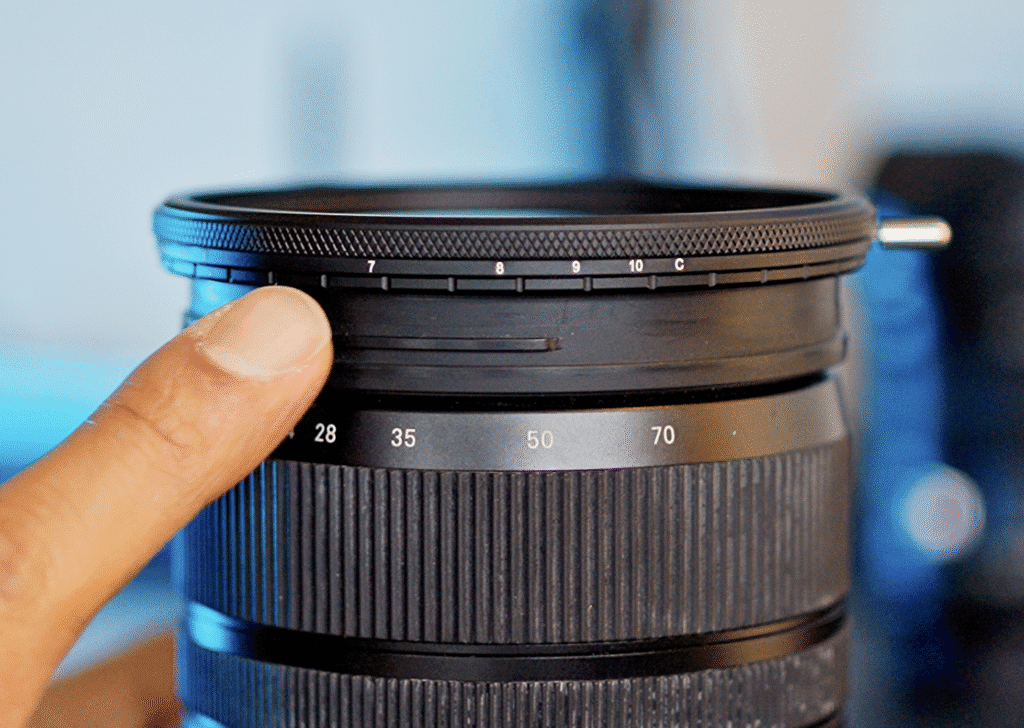
The magnetic solid ND that you stack on top does have a notch that fits the metal tab and helps to lock it in place. Also, it has markings on it that show you your new 7—10 stop points on the filter system. The stackable solid ND does feel pretty well secured once you line things up properly, and I was never worried about it falling off accidentally.
However, in my experience, anything over 6-stops of ND is usually unnecessary for most video work. 10-stops of ND (ND1000) is way overkill unless you’re planning on filming on the sun at f/1.2 at ISO 12800 or something!
In my outdoor test, it was pretty clear that the filter had some serious vignetting issues (especially at its max ND level) and also seemed to introduce some softness and flaring to the image.
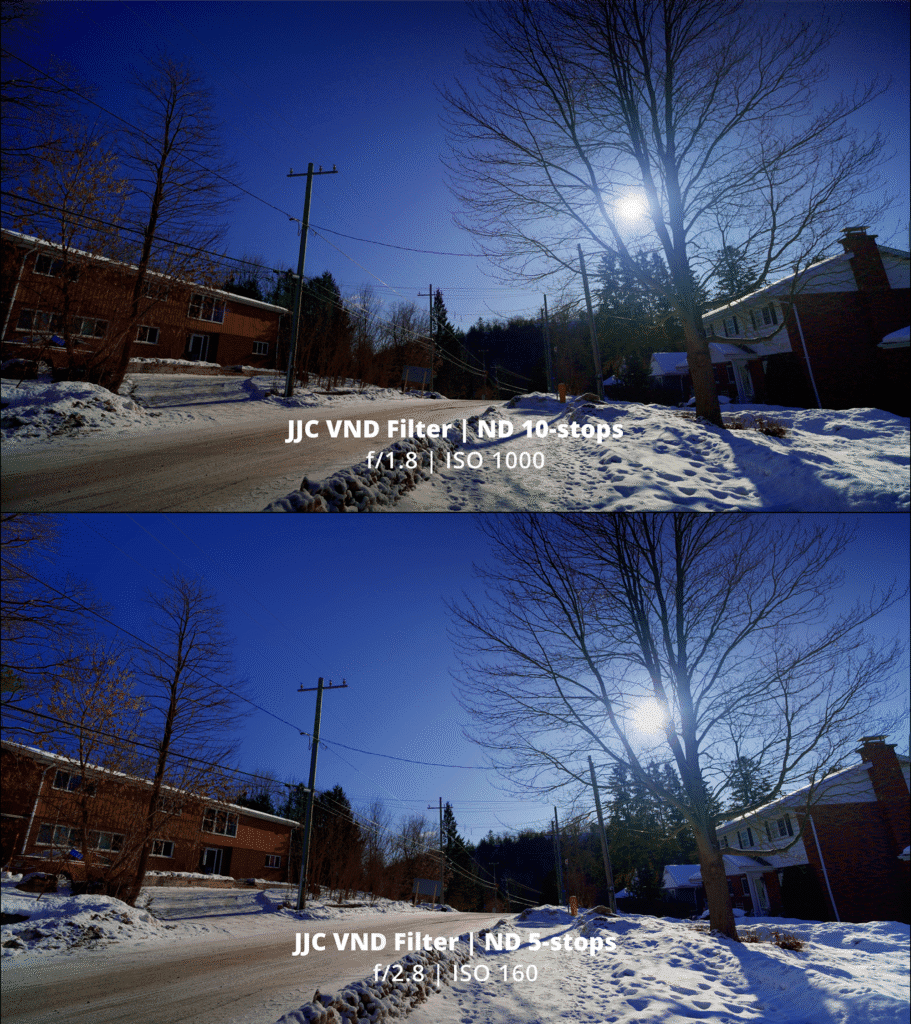
As you can see with the slider below, the JJC VND filter introduces a lot of vignetting and significant hue shift. Look especially at how it shifts the colours on the chart and the white card. It seems to introduce a magenta shift and a non-uniform vignette—which I suspect is from an X-pattern—that shifts the exposure in different parts of the image.
Below the Vectorscope will demonstrate how bad the colour shift on this filter is at its max level of ND. (Note: There’s also a significant affect of noise in the image due to the high ISO to get proper exposure) This is obviously the worst it gets since there’s the extra solid ND stacked on top of the VND for 10-stops.
Surprisingly, when you look at the Vectorscope for the filter at 1–5 stops, the hue shift is not that bad. So, this may be a good option if you don’t need a truly magnetic filter system that you can quickly pop on and off your lens.
Personally though, this was not my favourite filter and the fact that it really wasn’t a true magnetic filter system made it a “no” for me. However, if you really like the form factor, and need something with a crazy range of ND (1—10 stops is a lot!), and you’re more of a hobbyist, then perhaps this filter may be for you.
K&F Concept 5-in-1 Magnetic Lens Filter Kit
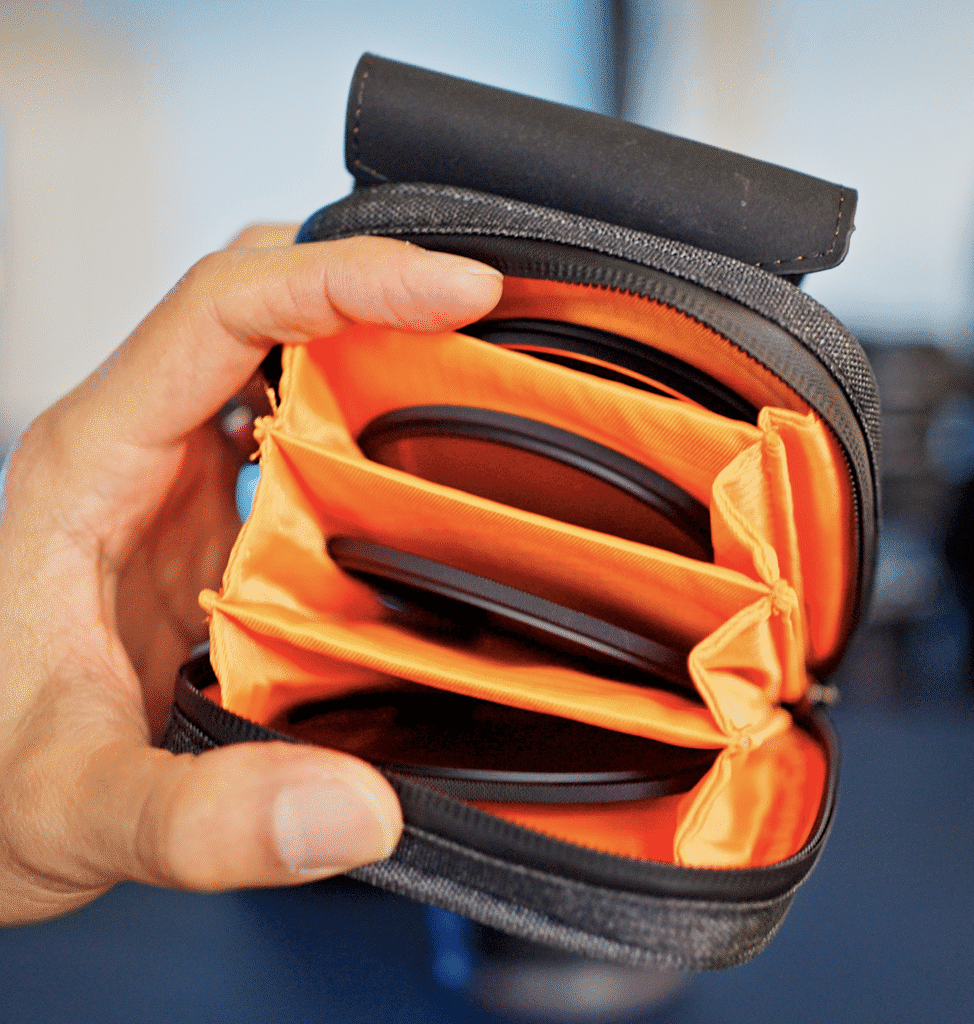
I was genuinely curious how these solid magnetic NDs would stack up—pun intended!
I really liked the handy carrying case these came in—and the lens cap fits in it! It was actually one of my favourite carrying cases out of all the filter systems. It has a zipper and a magnetic flap which you could use to close it quickly when you don’t feel like zipping it. It also has straps that you could use to attach it to your belt—which might make for a handy way to quickly swap filters on and off.
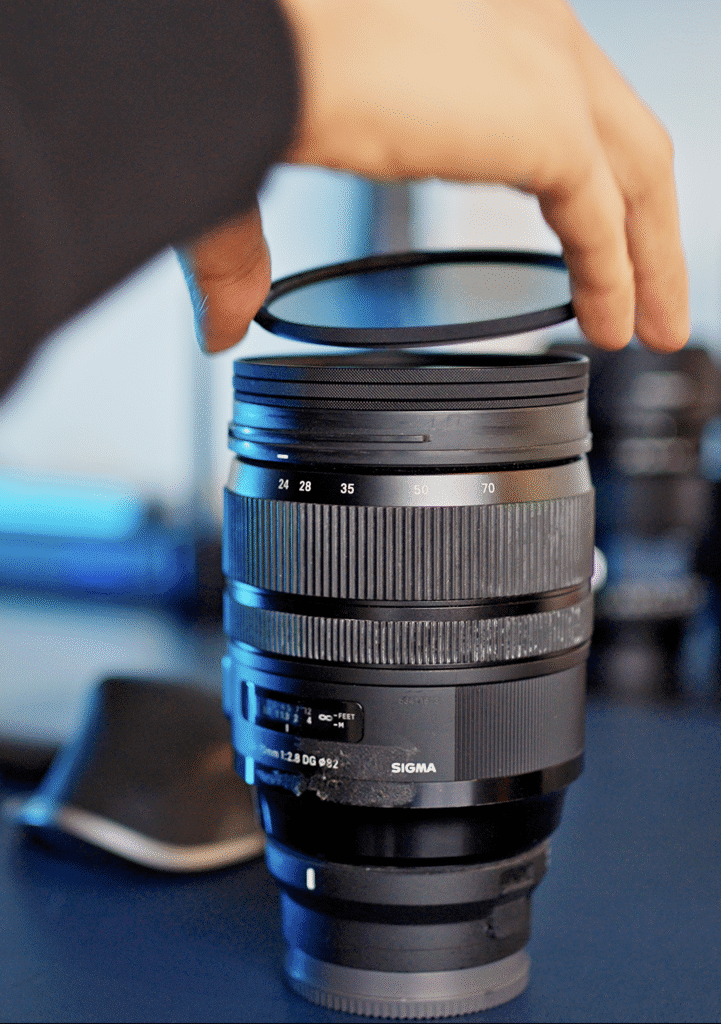
The stacking mechanism is pretty simple. Just a magnetic base plate that you screw onto the lens and then you pop the filters on top of it magnetically. The magnets on it don’t feel super strong, but they’re also not going to fall off easily. I did a pretty vigorous shake test with them on and they held fine. I just wouldn’t bump it, since that would probably make it fall off as there’s no locking mechanism beyond the strength of the magnets holding things on. Also, single hand operation is fine until you stack more than one filter. You’ll need both hands to unstack multiple filters—since trying to pull just one off will end up pulling all of them off.
I thought that the magnetic solid NDs would have the best performance out of the budget options, since there are less moving parts and it should be pretty easy to manufacture a good solid ND. After all, you just need to put some decent glass and coatings, right?
Wrong.
I was surprised how much hue shift there was between these magnetic solid NDs. The ND8 filter seemed to shift things very magenta while the ND64 filter shifted things toward teal/green. There was also quite a noticeable vignette.
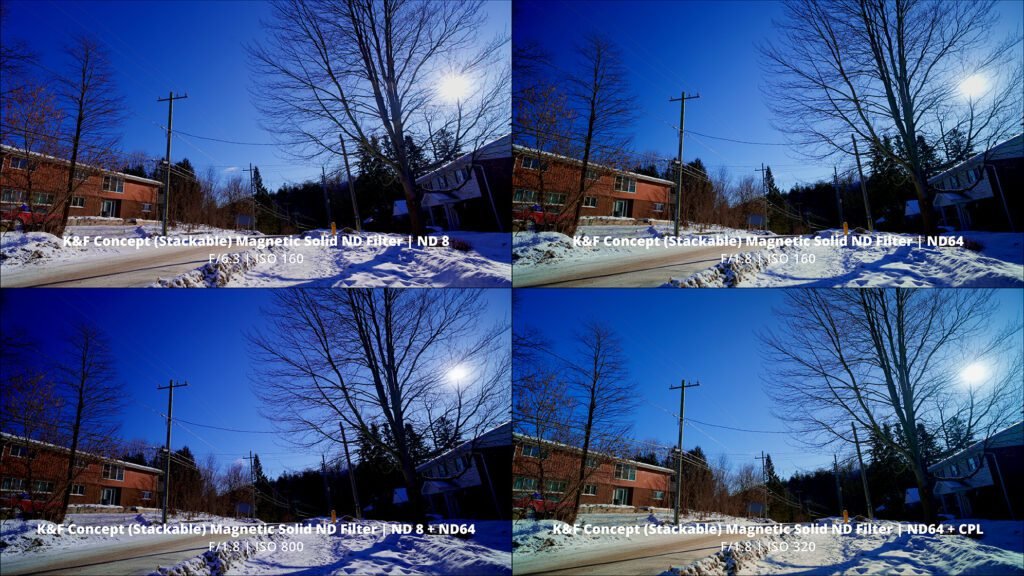
Also, if you stacked more than one filter on top of each other, you saw a pretty significant vignette. At 3 filters stacked, they started to come into the frame on the 16mm (see below). Note the top left corner of the frame where you can see the filter. This would obviously be improved if you were shooting on a longer focal length.

The hue shifts are even more apparent when you look at them compared to the clean plate. However, unlike the JJC filter, and due to the fact that these are solid NDs, there was no X-pattern. So they are more even across the frame by comparison.
However, you can also tell that the hue/colour shift is different on the ND8 vs the ND64—the colour cards are totally different colours! The ND8 shifts magenta and the ND64 seemed slightly cooler and maybe a little green. This is not ideal if you’re switching between them since that would throw off your colour grade in post-production.
Since the colour shift is so apparent, I don’t think it’s even necessary to show on the Vectorscopes. In my opinion, these filters are unuseable for professional work. However, for a hobbyist who wants a way to stack some ND and a CPL, it might be fine. You would at least have quite predictable hue shifts and vignette that you could correct in post in your NLE if you just stuck to shooting with one of the NDs. But if you’re swapping between them or stacking them, the hue shift would be quite different and make colour grading more difficult.
K&F Concept Magnetic Variable ND Lens Filter ND2-ND32 (1-5 Stops)
After testing the K&F magnetic solid NDs, I didn’t have much hopes for K&F’s magnetic variable ND filter. However, this one was the surprise in the batch!
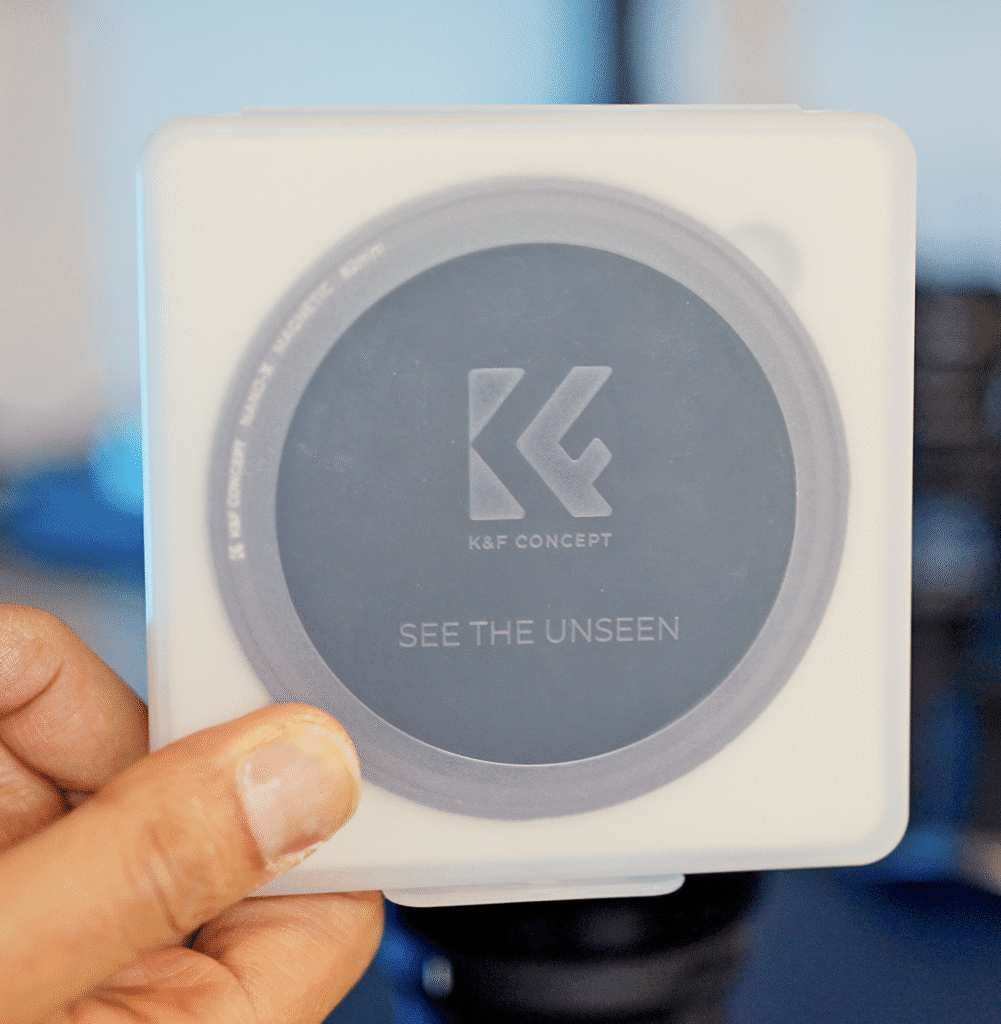
The white plastic carrying case is pretty basic, but it does the job. Plus it fits pretty easily into my back pocket—handy for on-the-go shooting situations.
The filter system consists of 2 parts—the 82mm magnetic base plate that you thread onto your lens and the magnetic VND that goes from ND2 to ND32 (which equates to 1–5 stops of light reduction). The VND turns smoothly and there are hard stops on either end to make sure you don’t go past the useable range.
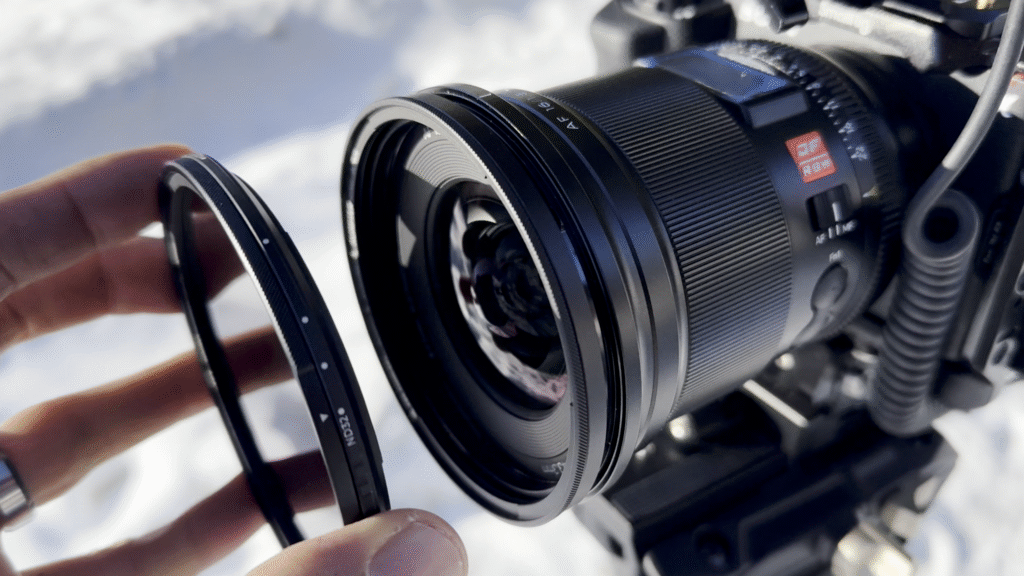
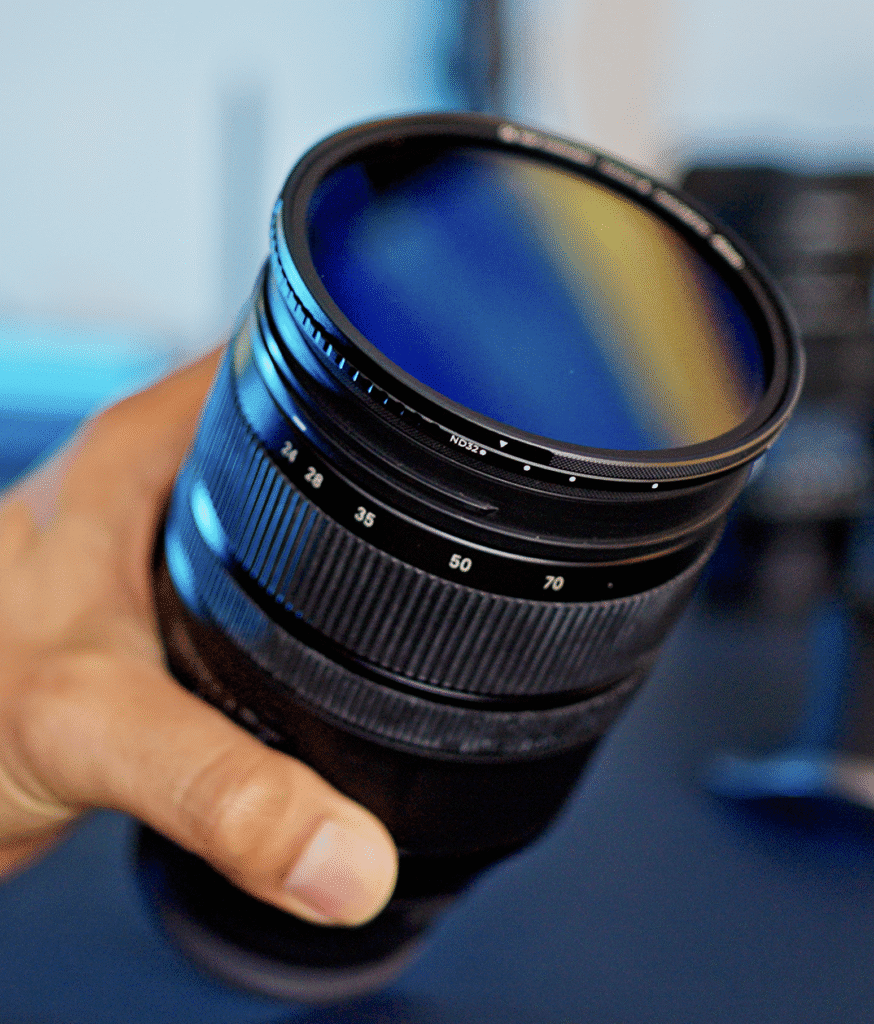
The magnets on this felt really solid, and there was a little bit of a notch in the base plate (see pic above) that locks the VND in so it doesn’t rotate. This allows you to be able to adjust the level of ND without having the filter rotate around on the base plate (super handy). However, it doesn’t “lock” in the sense of keeping the VND on the base plate like the Polar Pro MagLocks have.
I never felt like these were going to fall off though. After using them for a few months on many different types of run-and-gun shoots, I’ve never had them fall off (aside from if you significantly bump the lens on something—which happened once in the office and the filter came off onto my lap).
As you rotate the VND, there is a noticeable vignetting change (as you can see in the sky in the slider below) which is perhaps because of the two circular polarizers rotating on top of each other causing an X-pattern (all VNDs are basically 2 CP filters). However, to my eye, the hue shift didn’t seem as pronounced as some of the other budget filters. Subjectively, it felt like a more pleasant image to my eye, even though there was some noticeable green hues introduced—it felt (to use an overused term) “cinematic”.
One thing to note about this filter system, you can also rotate the whole filter to adjust the CPL effect if needed. So, if you find that it is changing your sky too much, rotating the entire filter might help with that. Similarly, this is useful when trying to cut through reflections.
In the controlled test, the filter felt more “neutral” even though there was still some colour shift and the obvious change in exposure for the background. The hues on the colour chart though felt like they stayed pretty consistent.
I was a bit surprised to see on the Vectorscope that there was a decent green and magenta shift at the filter’s highest ND level. However, it made sense to me since the green and magenta are complementary on the colour wheel. Perhaps they perceptually cancelled each other out making the filter feel more “neutral”?
At lower levels of ND the colour shifts were even less.
Now, this might be totally a matter of taste, but for me, the colours rendered out of this filter felt right. I’ve been using them now for a few months, and it also feels pretty easy to colour grade in post-production.
One thing I learnt after all of this comparison is that some of it does come down to personal tastes and the kind of look that suits you.
NEEWER Versatile Magnetic ND Filter Kit (1-9 Stops)
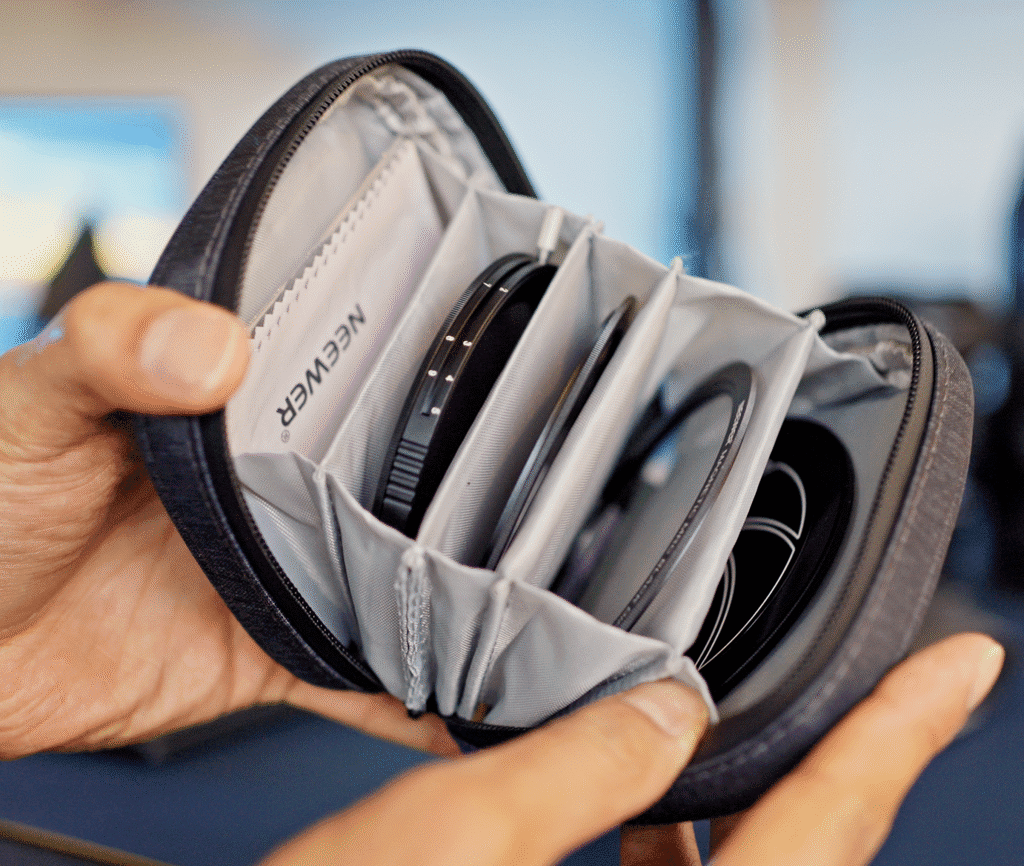
The case that this filter comes with is nice, but I still liked the K&F one from the stackable filters better. But it is nice that they included a cleaning cloth and a magnetic lens cap. However, this is another deceptively named filter because there is no magnetic base plate. Which means that you still have to screw on the VND. So, this is NOT a magnetic VND system that you can quickly pop on and off your lens.
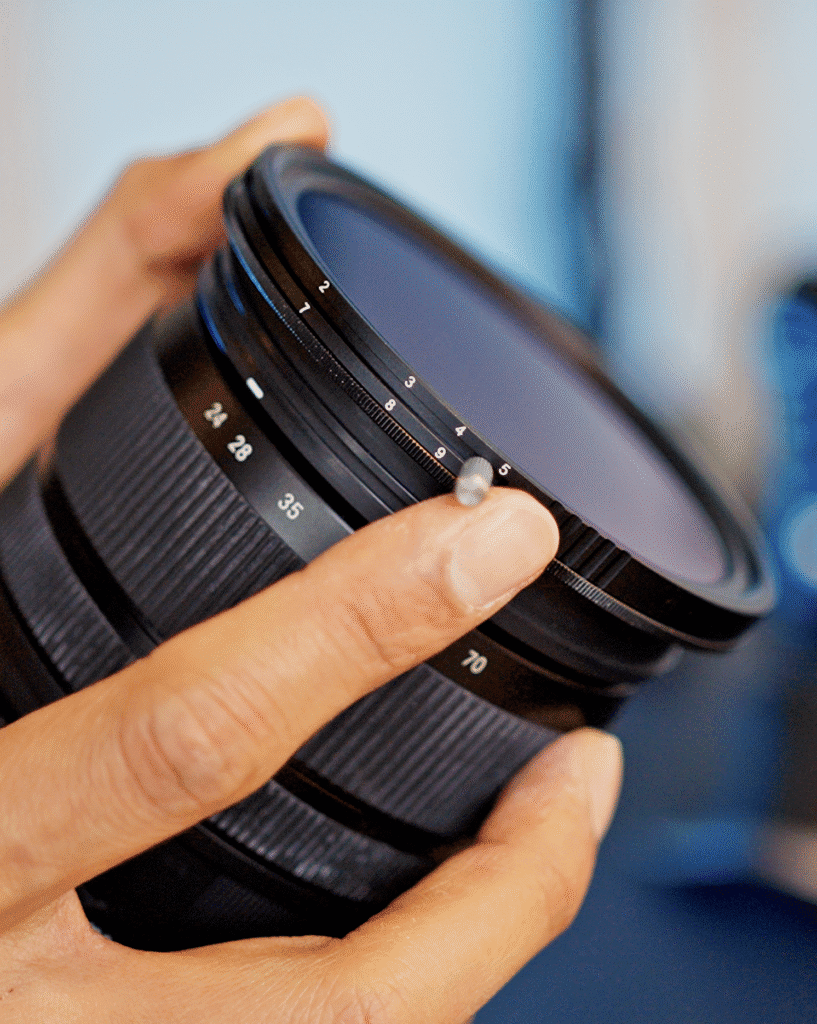
What makes it “magnetic” is that the lens cap, 1/4 Black Diffusion filter and ND32 filter that comes with the kit can be magnetically stacked on top of the VND after it’s screwed on. This, to me, makes this less useful of a filter system—especially since the quality of the glass is not great (as we’ll see).
It comes with a handy adjuster tab (similar to the JJC). But when you screw on the VND to the lens, if you just try to adjust the VND with the adjuster tab, it actually ends up rotating the whole filter and unscrewing it from the lens because it is so stiff. I’m not sure if this will loosen up over time, but for me this meant that I had to use two hands to adjust the level of ND on it—which is not great for run-and-gun situations.
The magnets that hold the additional stackable filters on felt adequate but not impressively strong (with the exception of the lens cap—that thing held on tighter than a boyband’s jeans in the 90s!). Unfortunately, although it was nice to have a magnetic lens cap that you could trust wouldn’t fall off, the optical performance of this filter was really poor.
As you can see from the slider above, the quality of the VND, especially at higher levels was not great. There is a significant amount of vignetting, X-pattern and colour shift. It became even worse once you stacked the ND32 on top—as the image degraded more and became less sharp. The colour checker comparison below shows the colour shift on this filter (even without the additional stackable ND32 on it). It gets significantly worse once you add the ND32 on top. Colour rendering on this filter was one of the worst in this batch I tested. Something else to note is that you can go a little further past the last marked ND to what I’m assuming is 10-stops (?). I tried it and it seemed to work, but the quality at that point was already pretty bad.
This was really disappointing for NEEWER, since I’ve really enjoyed some of their other products. I was expecting better quality from them given my past experience with their products. However, I’d say that this filter is unuseable and you shouldn’t buy it—even as a hobbyist, the other budget options are better.
NEEWER 82mm 5 in 1 Magnetic ND Lens Filter Set
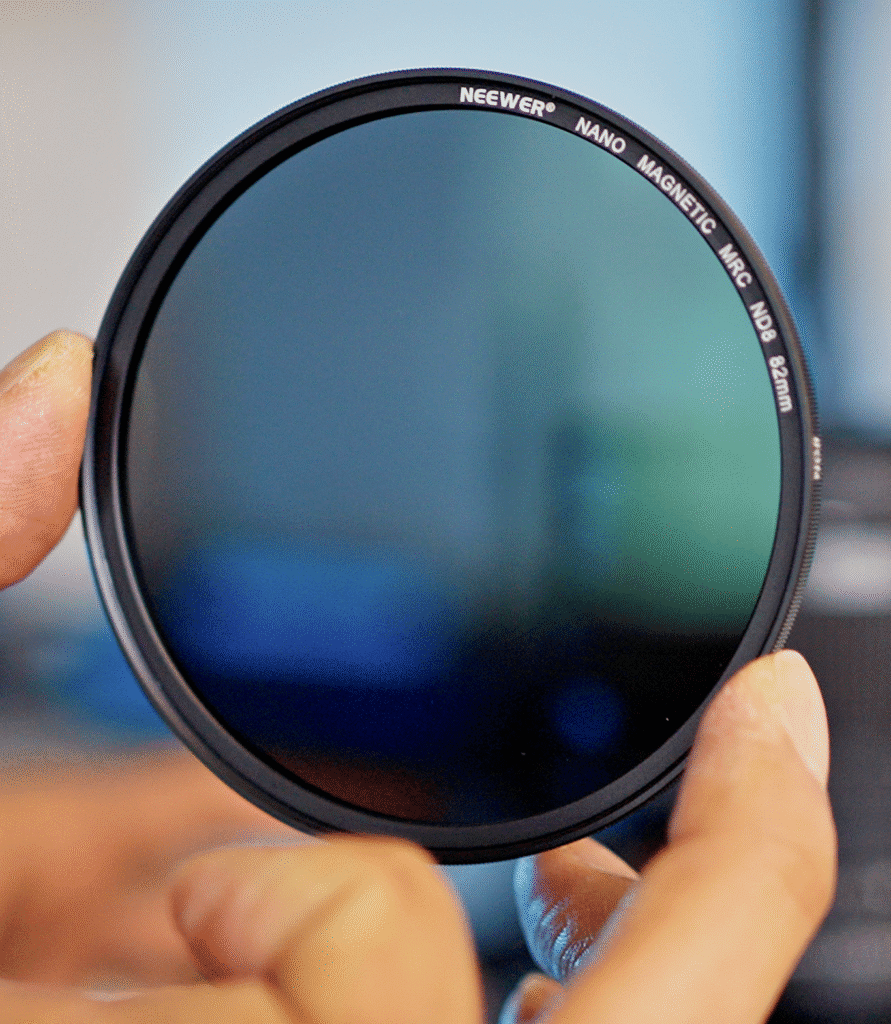
The case for this filter set is basically the same as the other NEEWER one. This, however, is a magnetic filter system with a magnnetic base plate. The solid filters are magnetic and stackable.
You get an ND8, ND64, a Gradiated ND8, and a 1/4 Black Mist Diffusion filter with the set. So, you could stack all four filters on top of each other to film at f/1.8 at ISO1600 on a snowy day in bright sunlight with a gradient and diffusion—cuz YOLO.
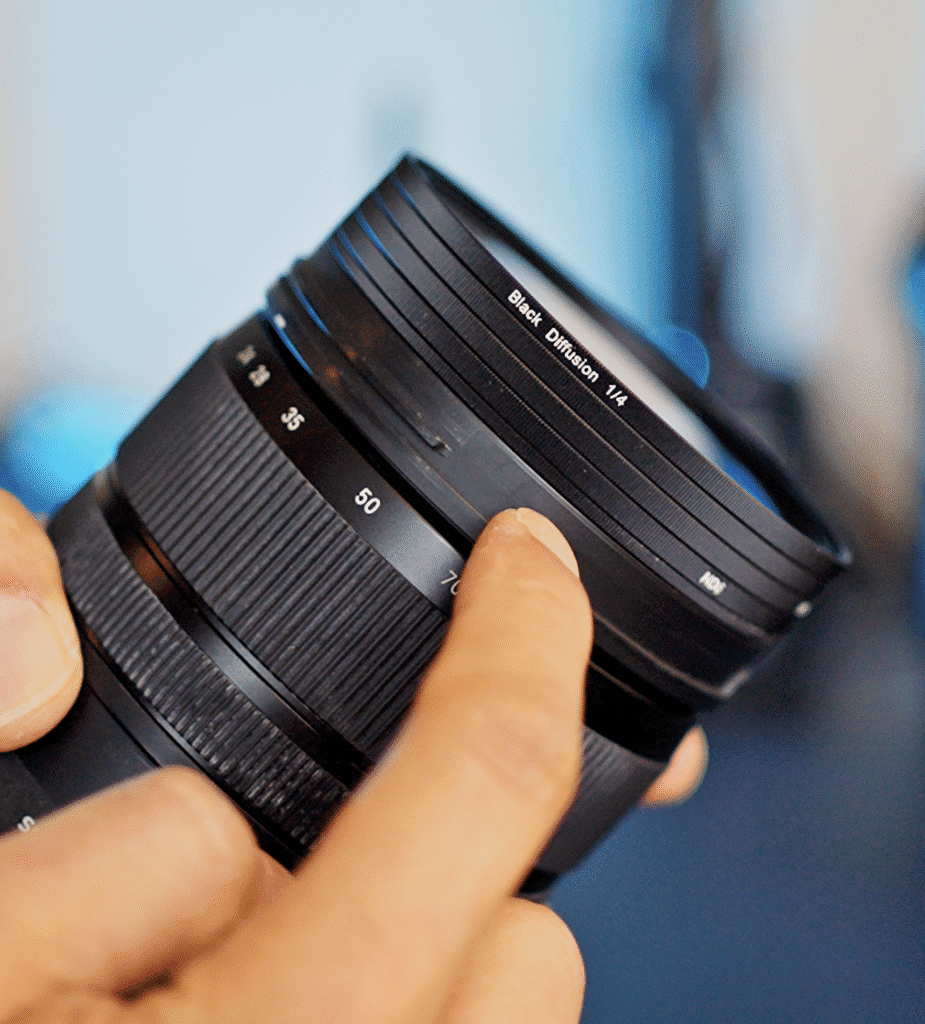
However, having a Gradiated ND8 might be nice for sunsets—but GND filters tend to more be something that photographers use rather than videographers. The 1/4 Black Mist Diffusion is not my taste—I think it just makes your footage blurry for no good reason.
Once the filters are stacked on each other—they are a little tricky to remove one-by-one and you’ll find yourself just taking the whole stack off to separate them.
I felt like the ND8 was quite useable—the ND64, less so. The ND8 looked like it had a slight magenta shift, but had good sharpness. The ND64, however, seemed to introduce quite a bit of green shift and vignetting.
The colour card tests seemed to confirm my suspicions of the ND8 having a slight magenta shift and the ND64 having a green shift. When compared to the K&F magnetic stackable ones (below), it seems like the colour shift on the NEEWER filters had less colour shift.
So, if you’re looking for a set of budget magnetic stackable solid NDs, then the NEEWER ones were slightly better than the K&F. I would have liked to have had a CPL instead of a GND8, since that would be more useful to me for video work though.
PolarPro Peter McKinnon Variable ND Filter (6-9 Stop)
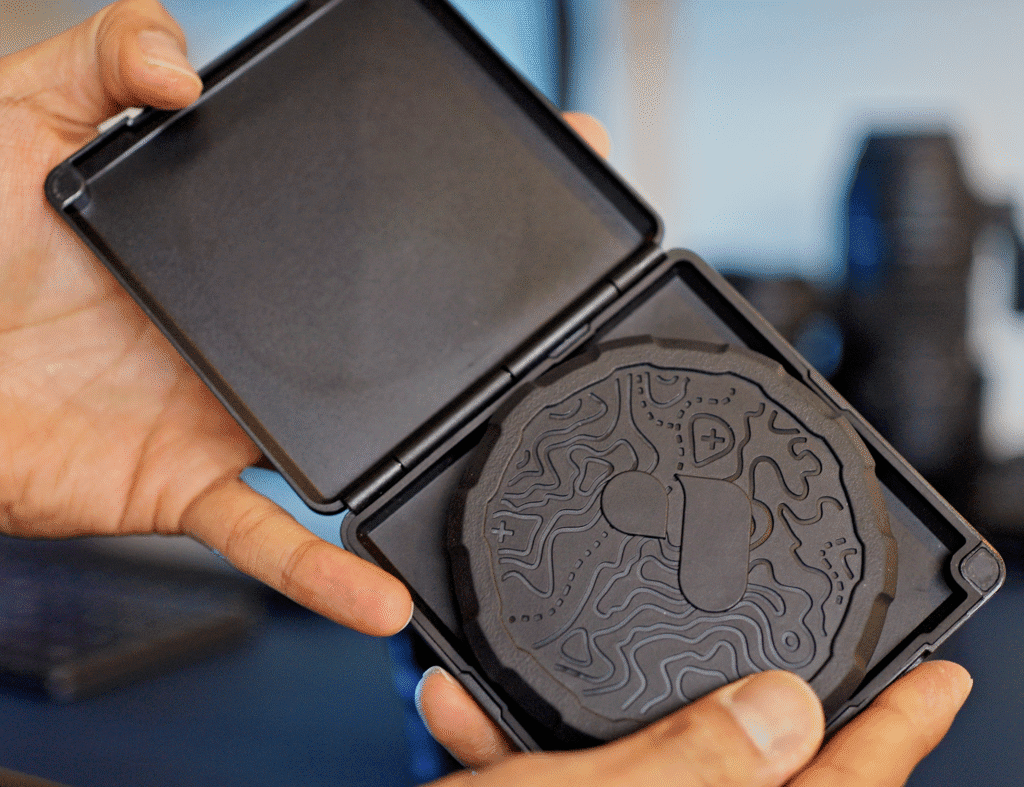
And we’re starting to get into the big boys now! This one is a screw-on VND, but I figured I’d throw it in the mix. Although it’s been replaced by the newer model, you could get it secondhand and I’m assuming that the newer model would have either equal or better performance.
I think the solid case it comes in is nice, though it picks up scuffs and scratches easily. I also really liked the rubber lens cap. It comes in handy for screwing the filter on and off your lens without touching the glass.
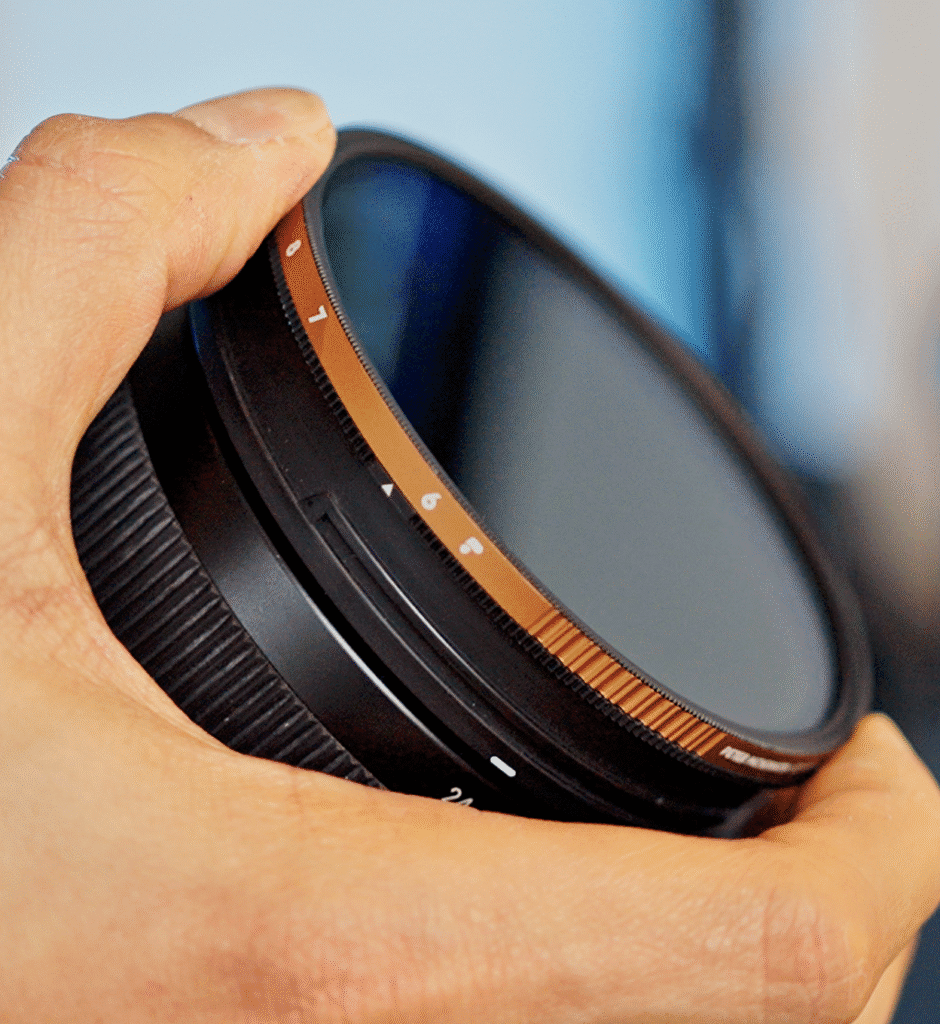
As one would expect, the build qualithy is really nice. It fits really flush to the lens and looks great! It rotates smoothly through the ND levels with hard stops on either end so you can’t go past.
I’ve had this one for a while now but seldom use it since I find that 6–9 stops of ND is generally too much unless I’m shooting wide open with an f/1.2 prime lens in bright sunshine.
However, I’ve always thought this filter had pretty good colour reproduction and controlled vignetting. The glass is also very sharp and I could see no visible degradation of sharpness in the image.
You can see from the colour checker that the colour reproduction is pretty on point. The vectorscope below confirms this.
In terms of optical performance, this was one of the best I have used and it set the bar for my expectations for PolarPro’s top-model VNDs. If you are looking for a non-magnetic 6-9 VND and you can find this one, I’d recommend it!
PolarPro McKinnon Series Helix Maglock Magnetic Variable ND Filter System
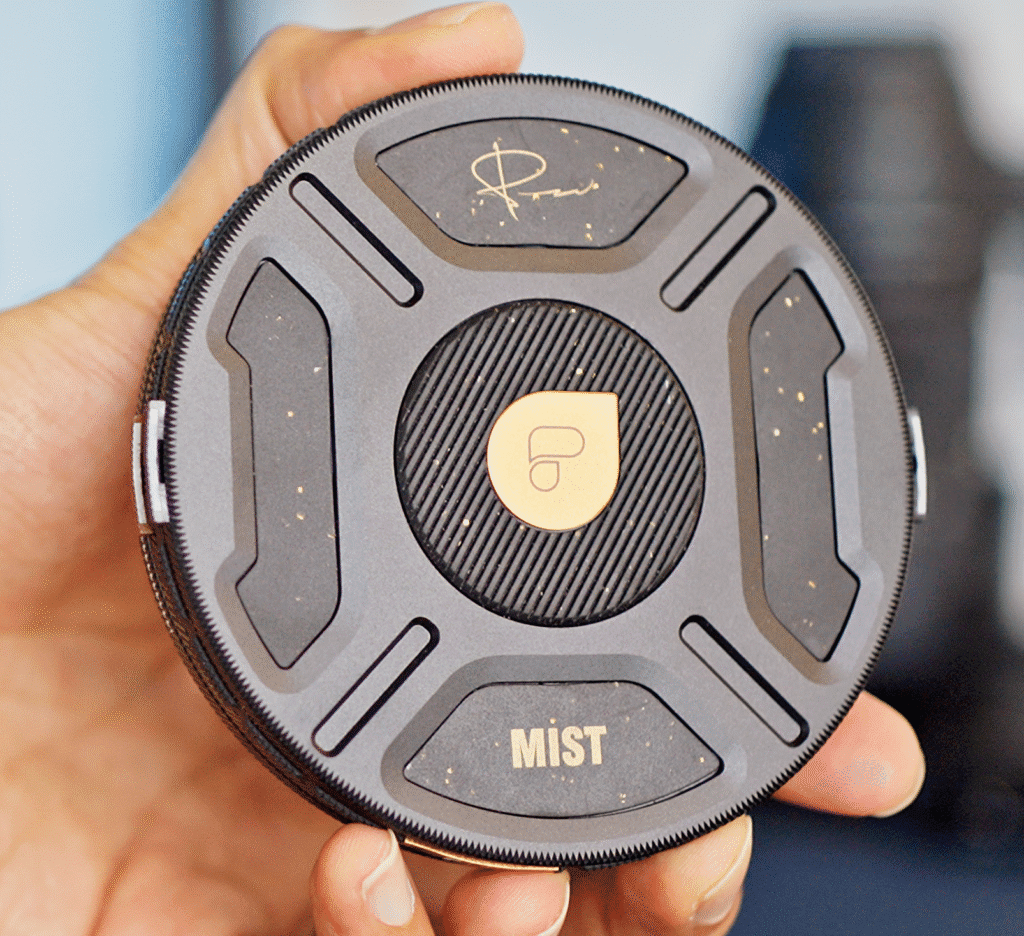
Finally, the magnetic filter system everyone has been raving about. Immediately you realize that the PolarPro McKinnon Series Helix Maglock Magnetic Variable ND Filters look and feel like a premium product compared to the other budget filters.
They’re also quite a bit heavier given their solid metal construction and also extend beyond the diameter of an 82mm lens a bit. Even though they weigh a bit more, I didn’t find that they affected the balance of my gimbal any when taking them on and off during a shoot.
The locking mechanism on the Helix Maglock system is really one of the unique and selling features for this. Not only do you have strong magnets holding the filter, but it also has a lock that clicks on and a release button to ensure that your really, really expensive filters never fall or get knocked off your lens.
For many people, that peace of mind closes the deal on these. The filter covers also look really cool!
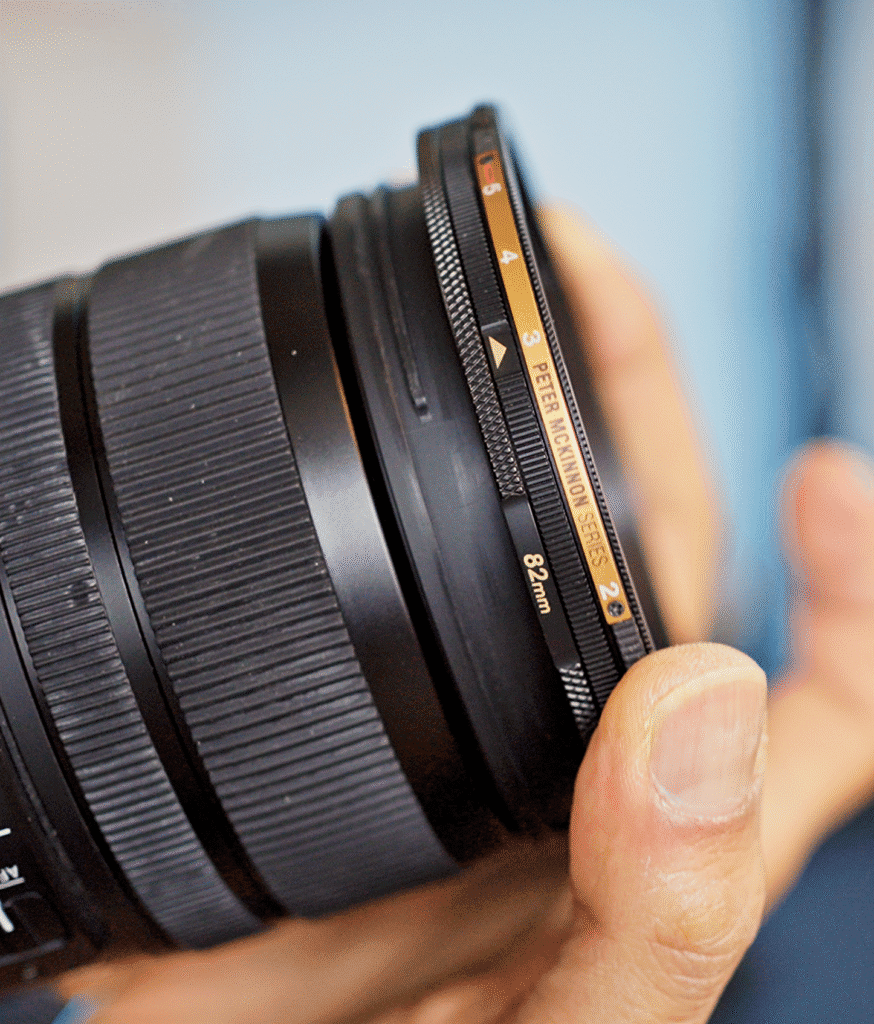
The VND filters have a slight snap/click to them to let you know when you’re at the exact level of ND. This force-feedback is quite useful as you’re stepping through ND levels, however, I’ve never been too worried on any of these filters about being between a level of ND if that’s what the exposure on my shot calls for. So, while it’s a nice feature, I personally prefer the smooth rotation without the clicks. The filters also have hard stops on either end.
These filters are also magnetically stackable. So you could stack a VND with a Mist filter or GoldMorphic filter for additional creative options. Each of them have the same locking mechnism as well for added security.
I was a bit surprised to see from the colour card test that both the 2-5 and the 6-9 Maglock VND filters had a pretty noticeable colour shift. It wasn’t unusable in my opinion, but it worse than the older McKinnon 6-9 VND. There was also a noticeable vignette, which was especially bad on the 6-9 VND filter. The vectorscopes below show the full story.
The 2-5 VND filter (above) shows a significant magenta shift as well as hue and saturation shifts in red, yellow, green and cyan. The 6-9 VND filter (below) shows shifts in all hues except yellow and some desaturation as well.
This was surprising optical performance from premium priced filters. In my opinion, the K&F Magnetic VND seemed to perform similarly, if not slightly better in this regard. Now, at least for the 2-5 VND filter (which is what I would be using most of the time), I felt like the optical quality was acceptible and definitely useable for professional work. However, I was expecting these PolarPro McKinnon Helix Maglock Magnetic VND Filters to blow everything else out of the water with the optical performance.
My Recommendations
To be honest, I was actually quite surprised that the Polar Pros didn’t live up as much as I had hoped for given their price point.
I thought that for sure something that much more expensive would be definitively better when it came to pure optical performance. So, it was surprising to see it perform worse in some areas like vignetting and colour shift than some of the budget options. The PolarPro McKinnon Helix Maglock Magnetic 2-5 stop VND did have acceptible performance optically though. With some work in your NLE, you could easily make some presets to correct any colour shifts and vignetting that you get from the lenses.
However, when the build quality is factored in, the PolarPro McKinnon Series Helix Maglock Magnetic Variable ND Filter System is second to none. Their locking system is rock-solid and I’ve never had any worries of it getting knocked off or falling off. They also look really premium—which is not a trivial consideration when you have clients looking at the gear you bring to a shoot wondering if they’re getting their money’s worth. (Let’s be honest, sometimes we bring the big rig out just to emphasize that we’re professionals and know what we’re doing… right?)
So, for some people, the PolarPro McKinnon Series Helix Maglock Magnetic Variable ND Filter System might be the right choice—especially if looks and build quality are important for you. However, for the same price that I could buy one of these PolarPro filter kits, I could buy 4 of the K&F magnetic VND kits!
Get This One
However, if you’re not as concerned with looks and only concerned with the optical performance, I found that the K&F Concept Magnetic Variable ND Lens Filter ND2-ND32 (1-5 Stops) was the best performing budget VND filter I tested. Yes, it’s not as glamorous as the McKinnon ones, but they get the job done.
I’ve been using the K&F Concept Magnetic VND for over 8 months now on various professional client shoots and I’ve never had any problems with them falling off or with their optical performance. As with all VNDs, they do introduce some colour shift and vignette to the image. However, out of all the budget ones, I thought the K&F Magnetic VNDs had the least. Also, now that I’ve been using them for a while, and since the shifts are always consistent for each lens focal length, I’ve been able to make presets for myself to correct those shifts in DaVinci Resolve—which makes them super easy to work with.
The biggest advantage for me was the cost.
Because they’re quite a lot cheaper than the McKinnon filters, I could afford to buy multiple to put on each lens in our kits at our agency for a fraction of the cost. Having all the same filters on every lens that we shoot with makes production a lot more streamlined since we can all use the same corrections in post, and the whole team can get used to one filter system. Plus, if one of them happens to break or get damaged on a shoot, it’s not going to break our pocketbook to replace it.
We still have a set of the McKinnon filters as an option when we need a really secure mounted VND—but for the majority of run-and-gun social media content that we do, the K&Fs have been working great!
Avoid These Ones
Personally, I’d avoid the NEEWER ones. Although I really wanted to like them more (since I love a lot of NEEWER’s products), their optical performance was really sub-par for professional use. Especially because the K&F ones are about the same price, I can’t see any reason to purchase the NEEWER filters over the K&F ones. The JJC filter was also disappointing—especially since a YouTuber I really trusted recommended them (another reason you need to test things yourself sometimes and don’t just trust random YouTubers). Optically, the JJC was acceptible for hobbyist and some professional work—however, it’s not truly a magnetic filter system since you still have to screw on the VND.
I hope that this review was helpful and you found some value here. If it was, please share so others can benefit as well.
All the best creating awesome stuff!
